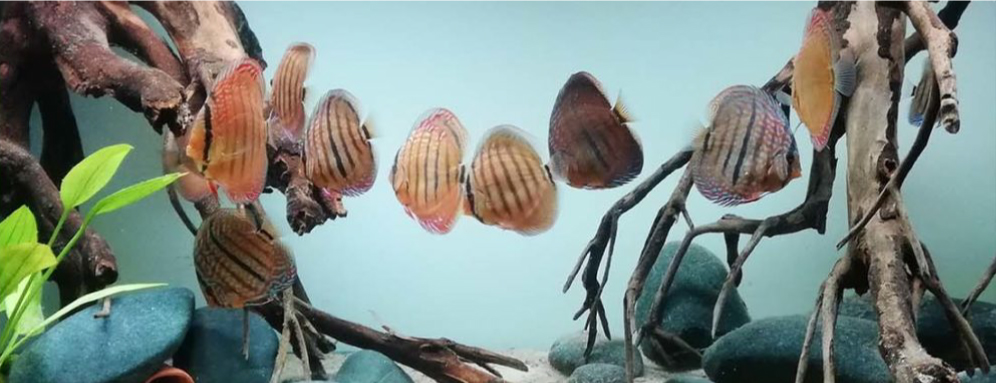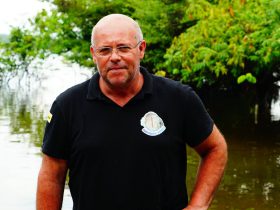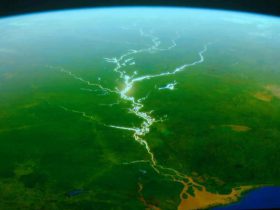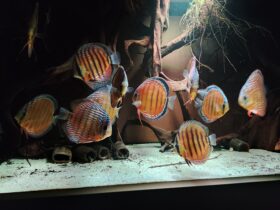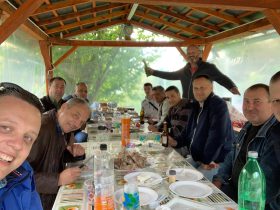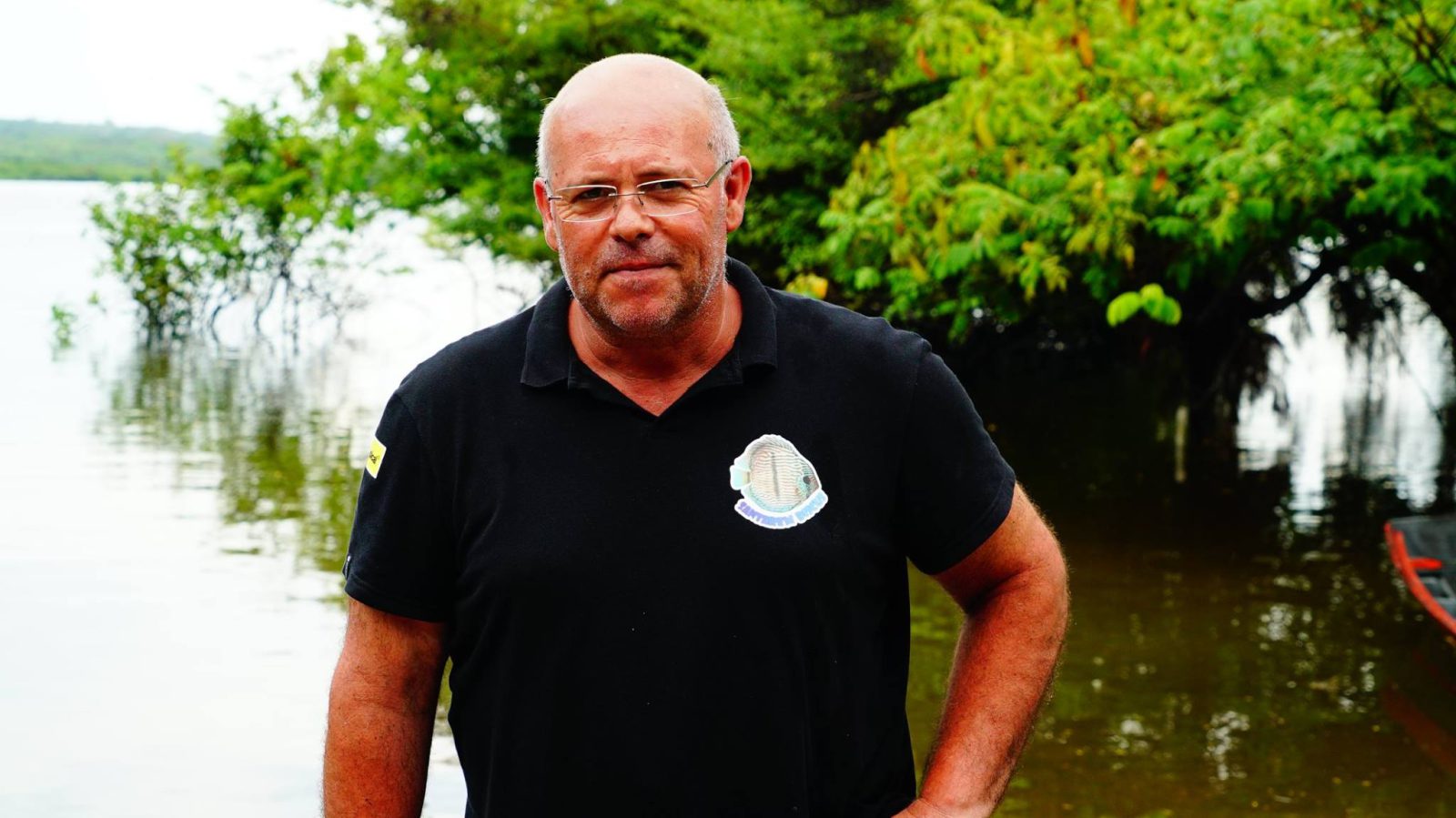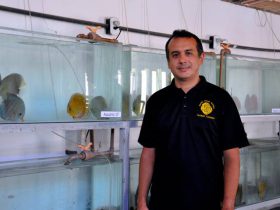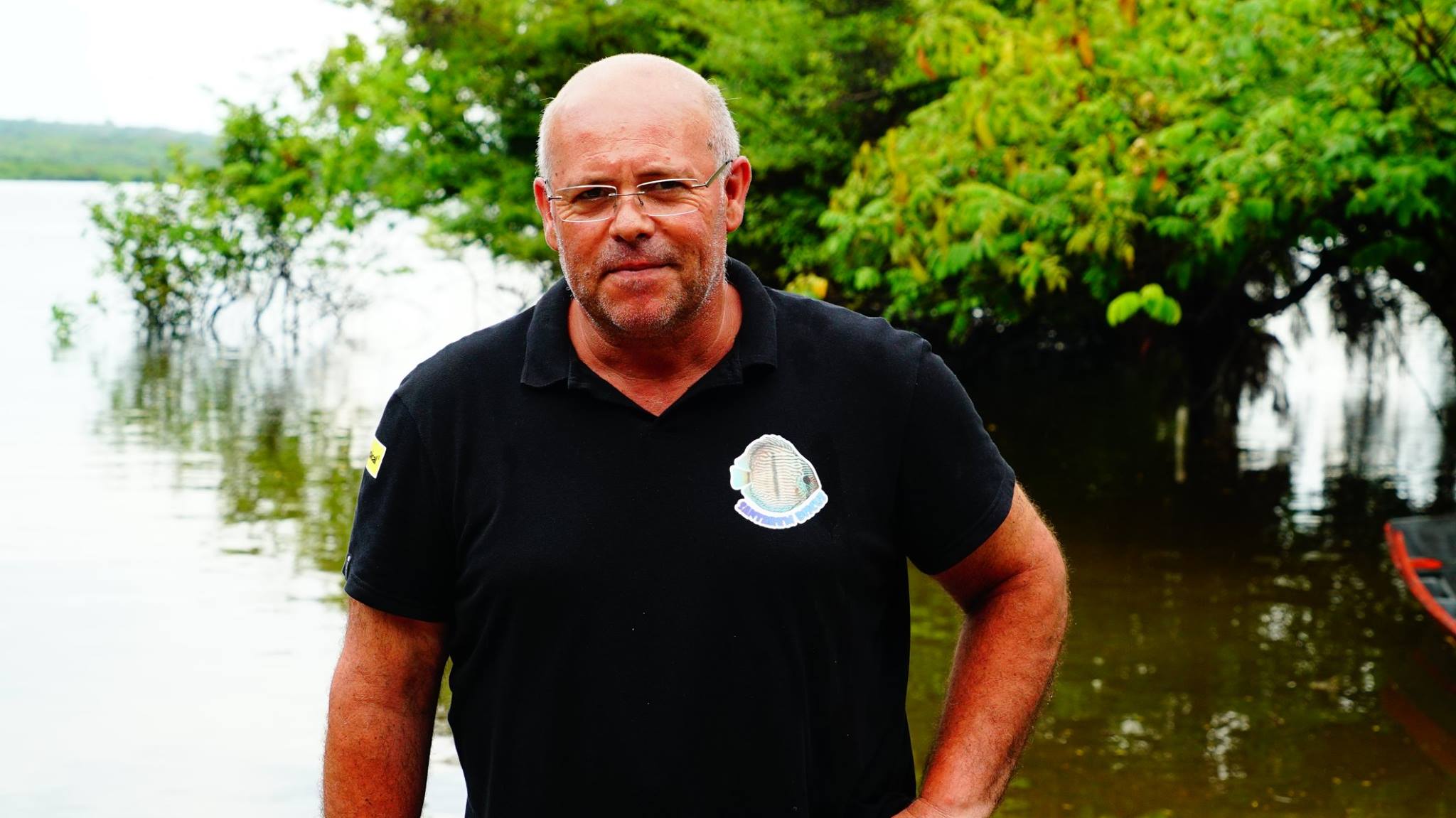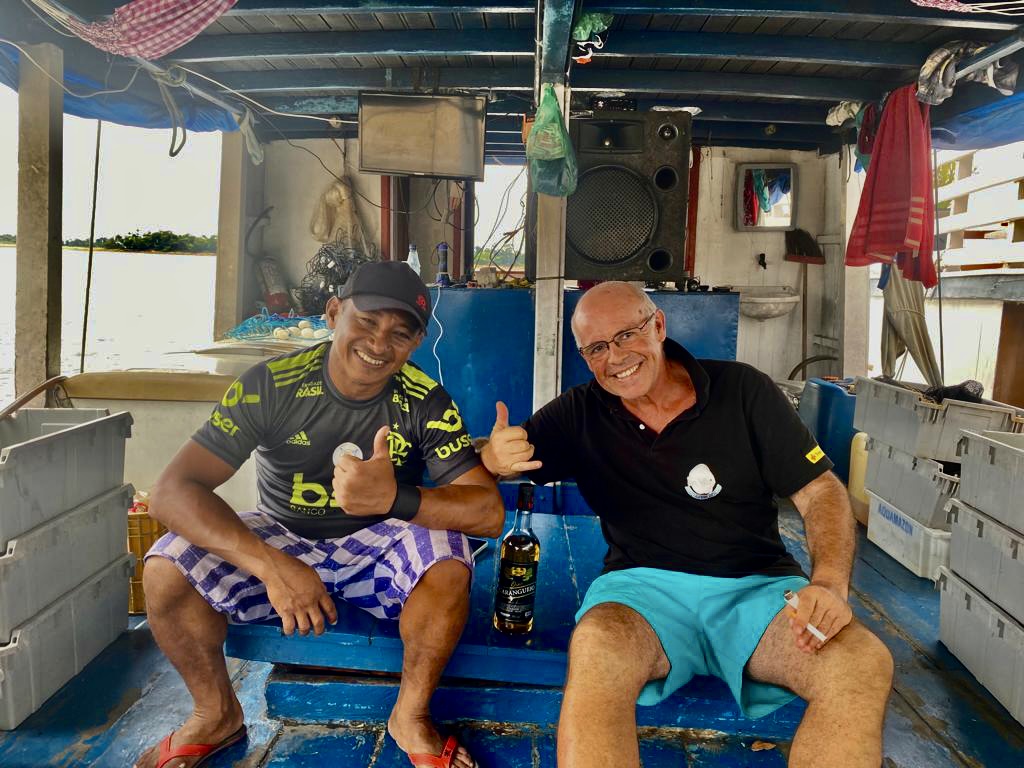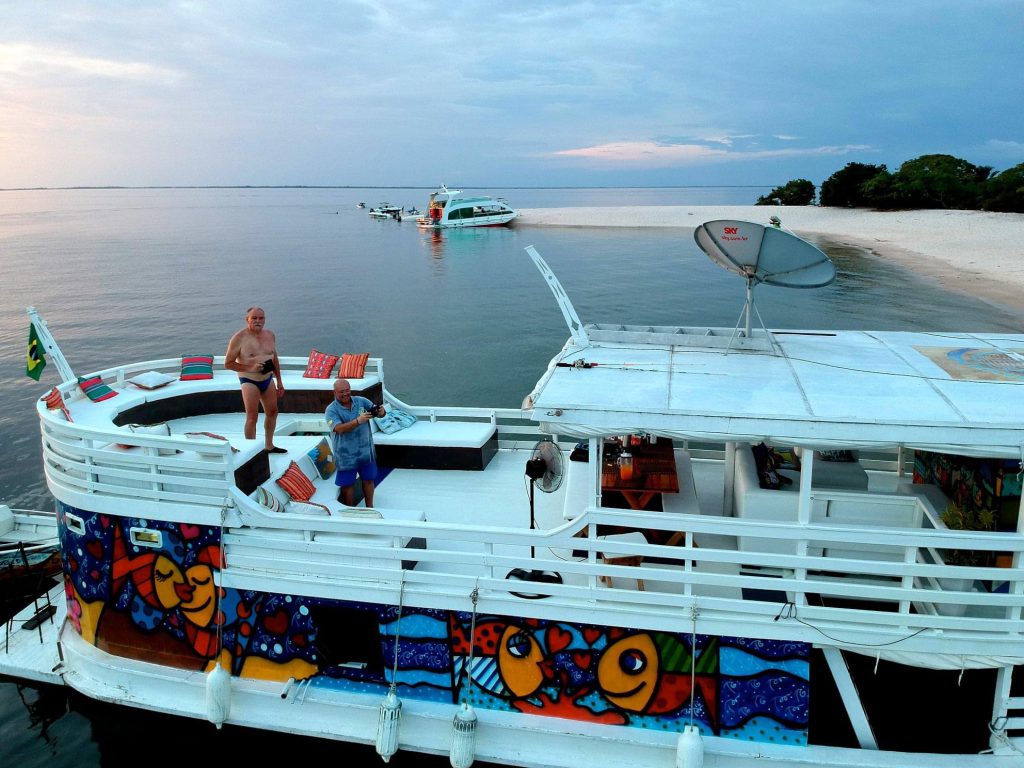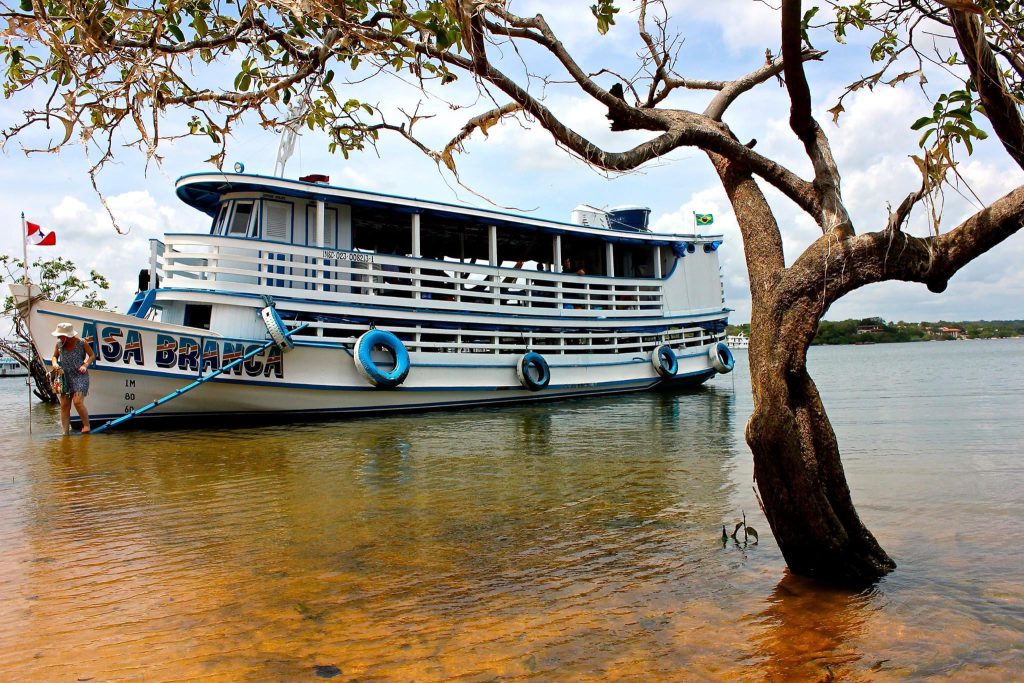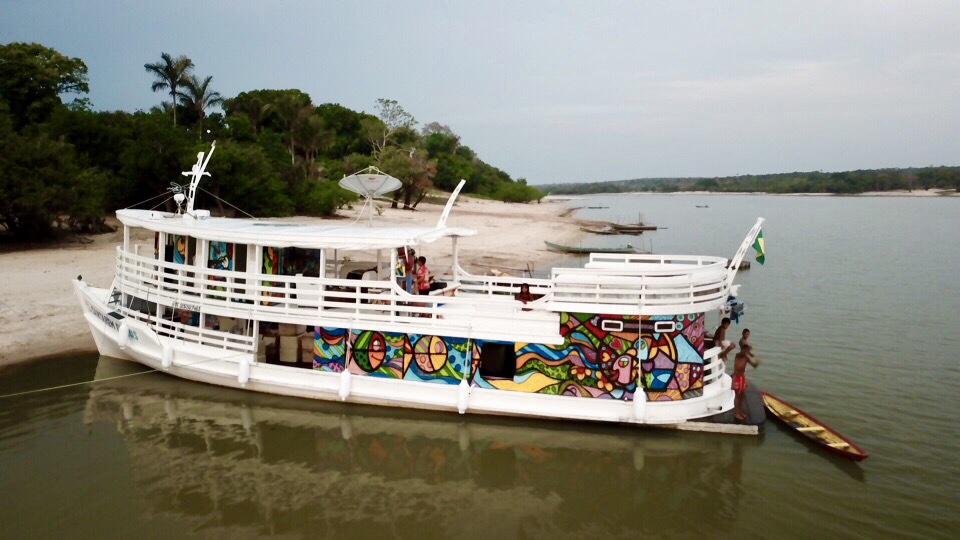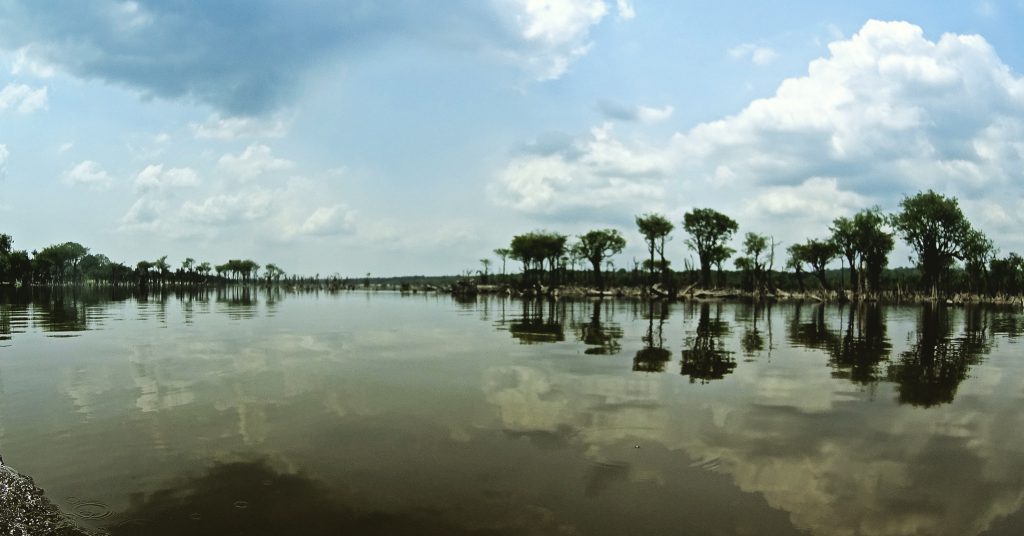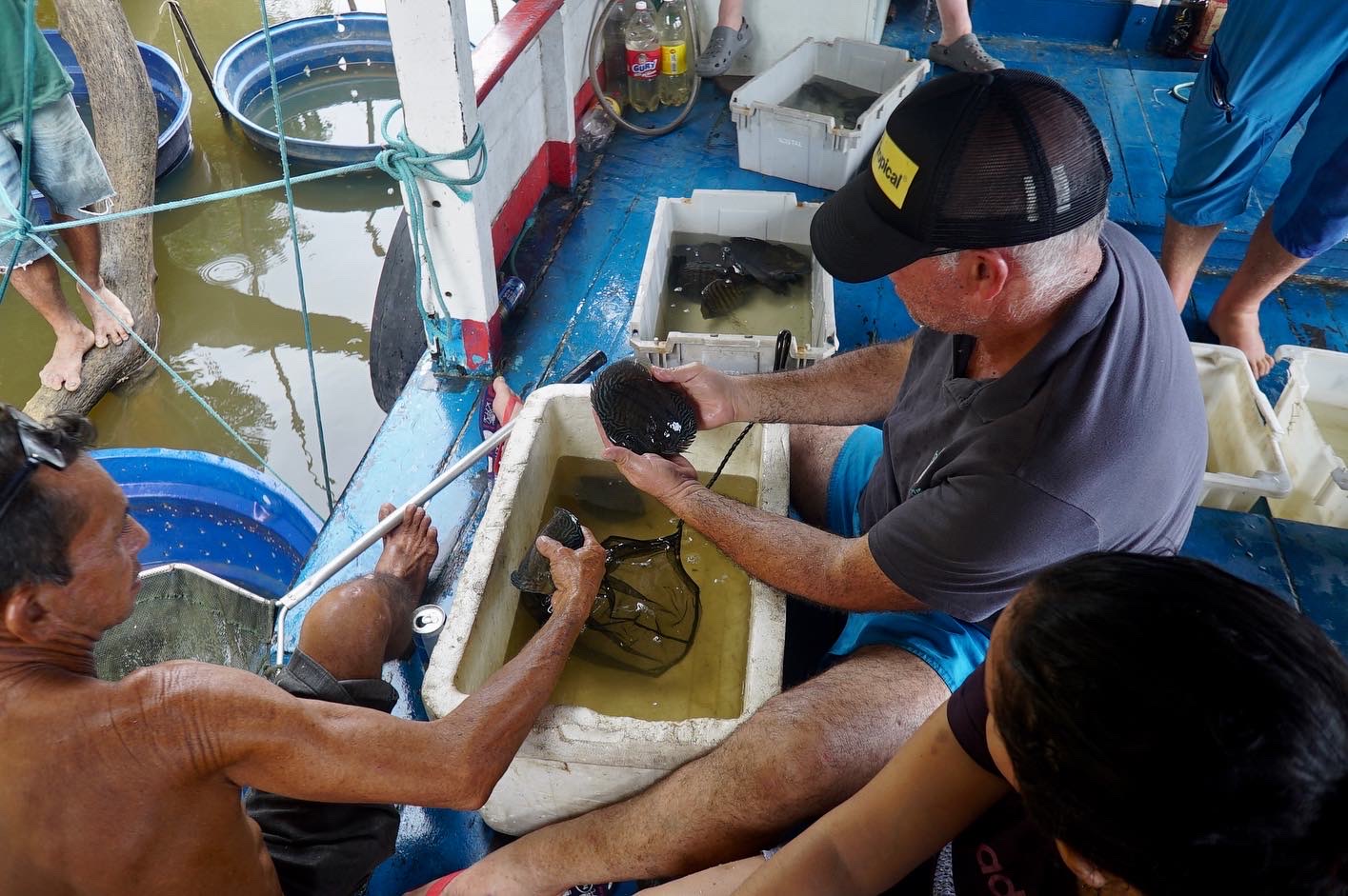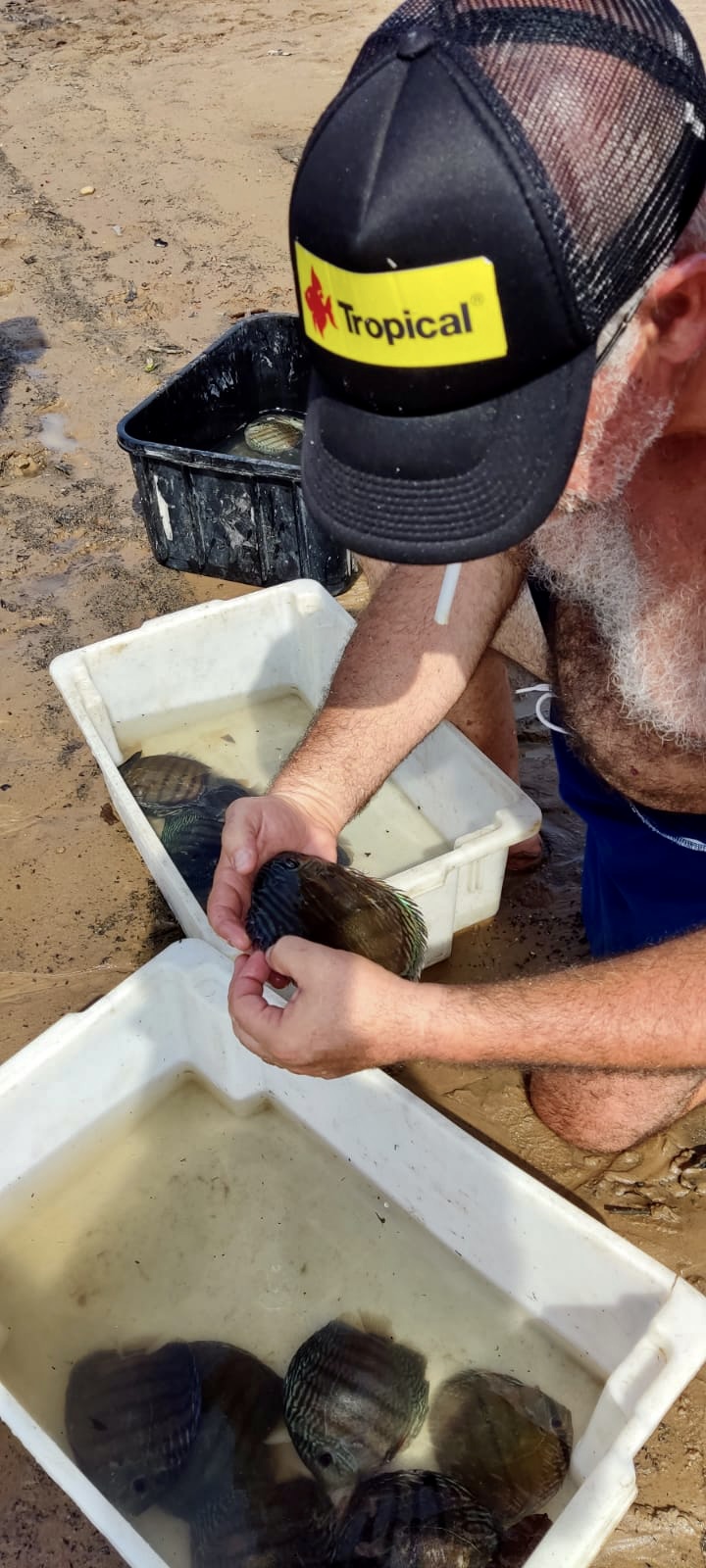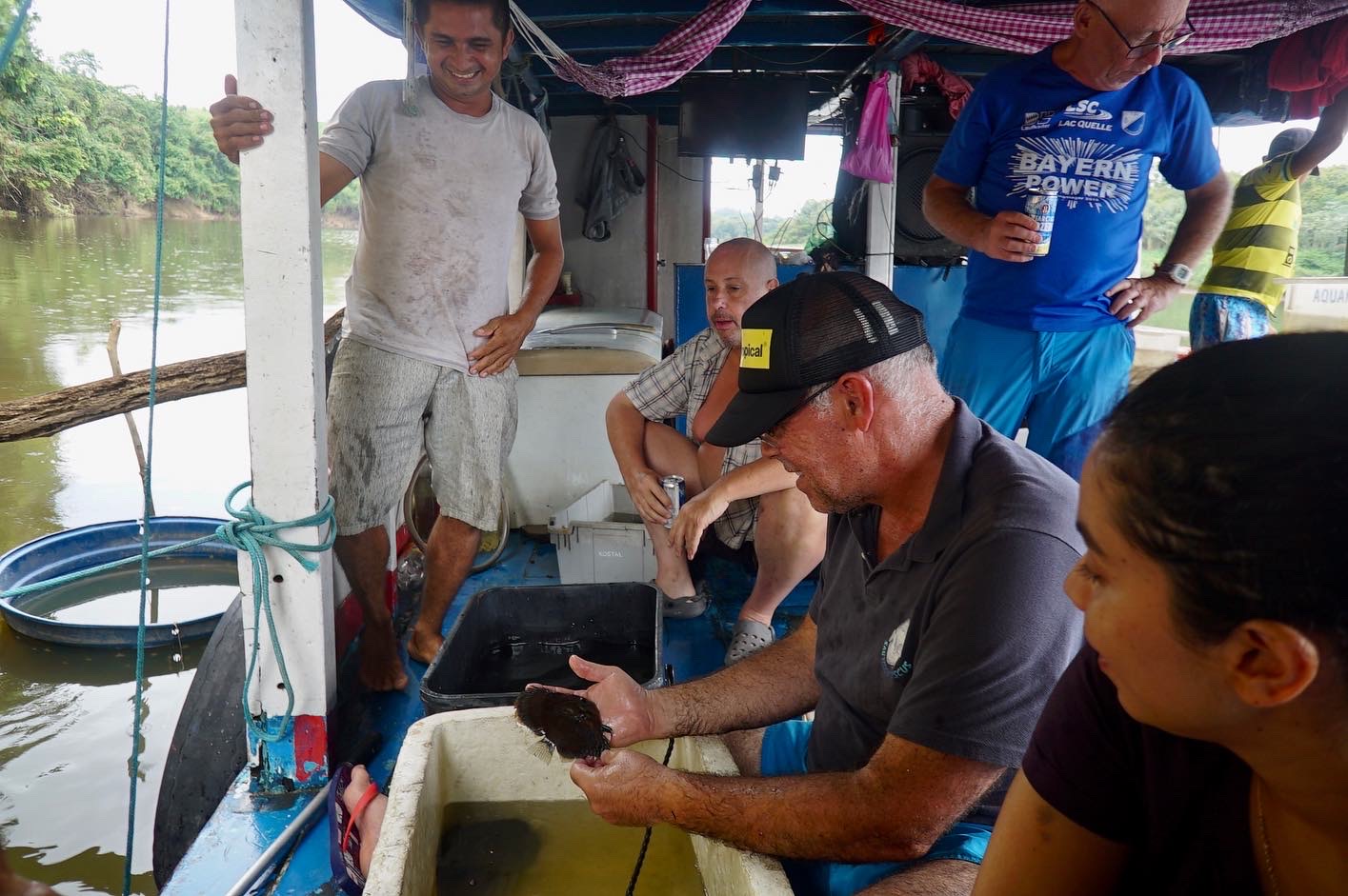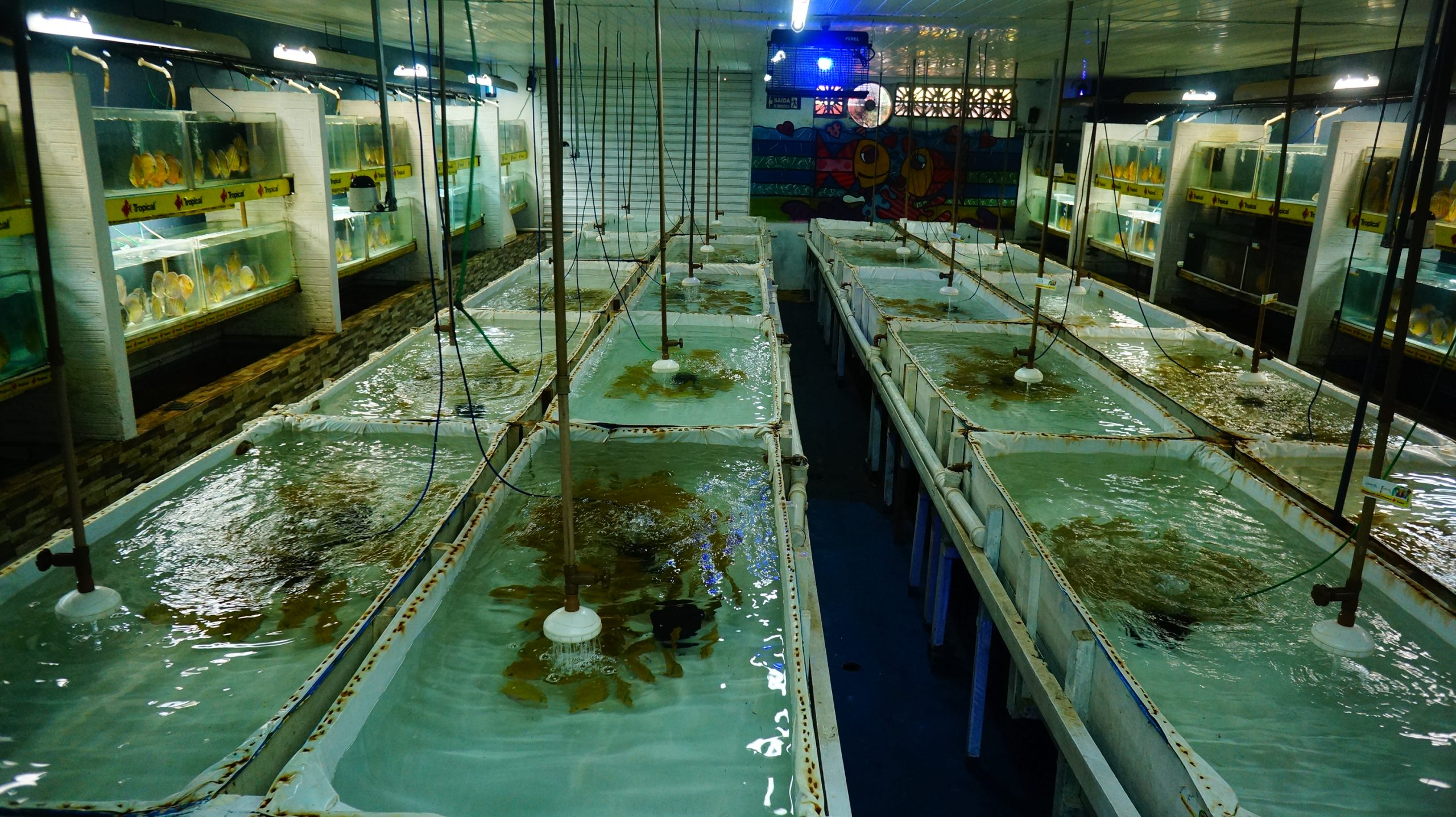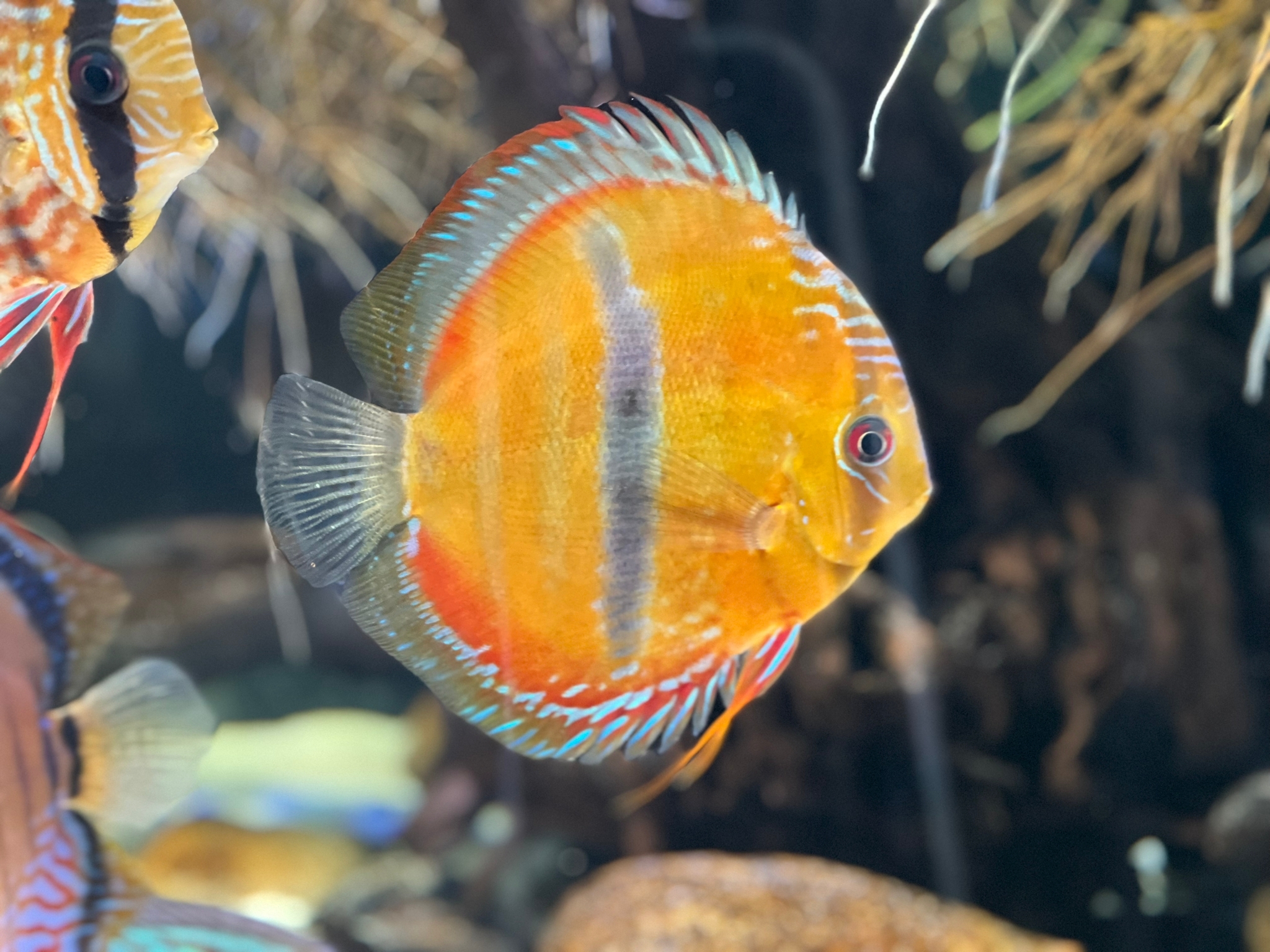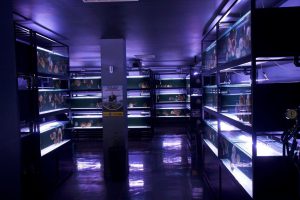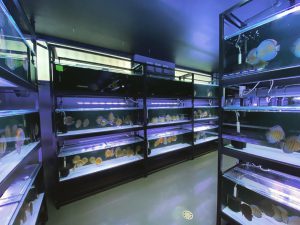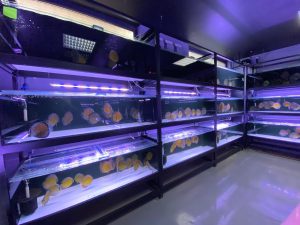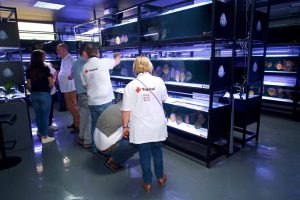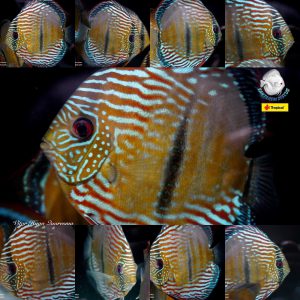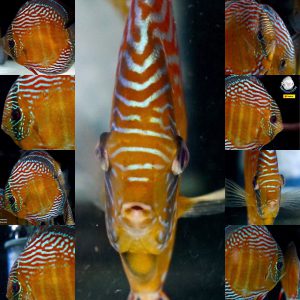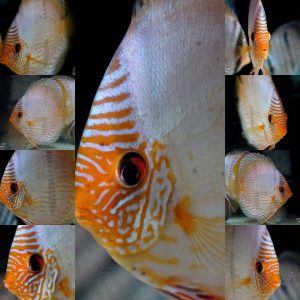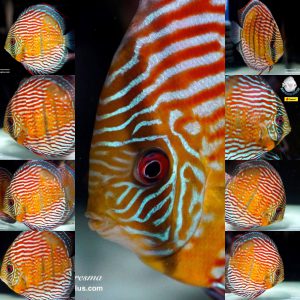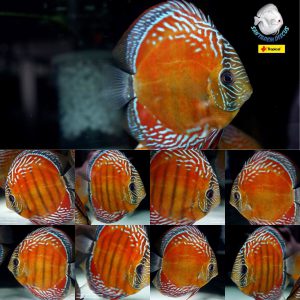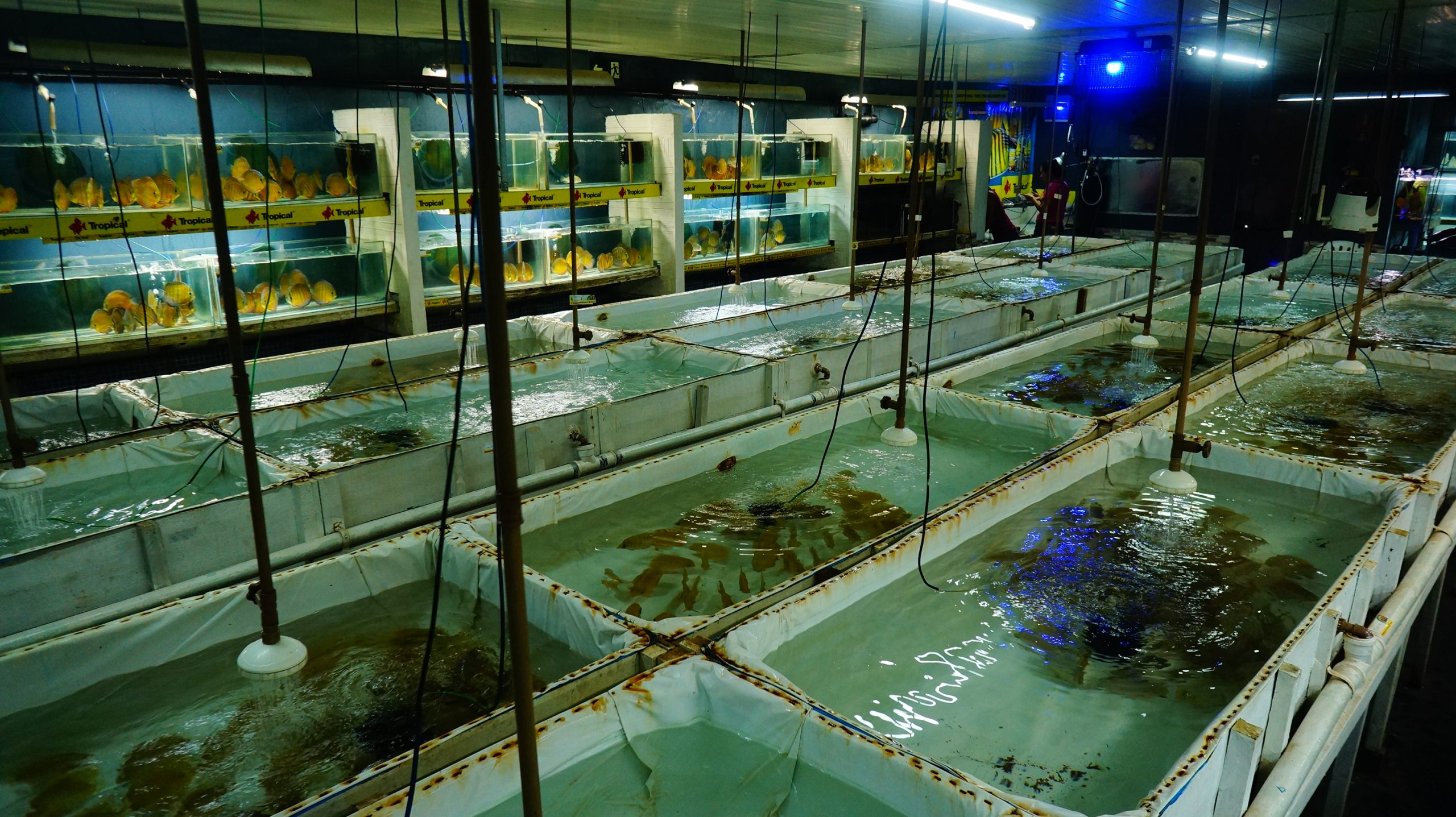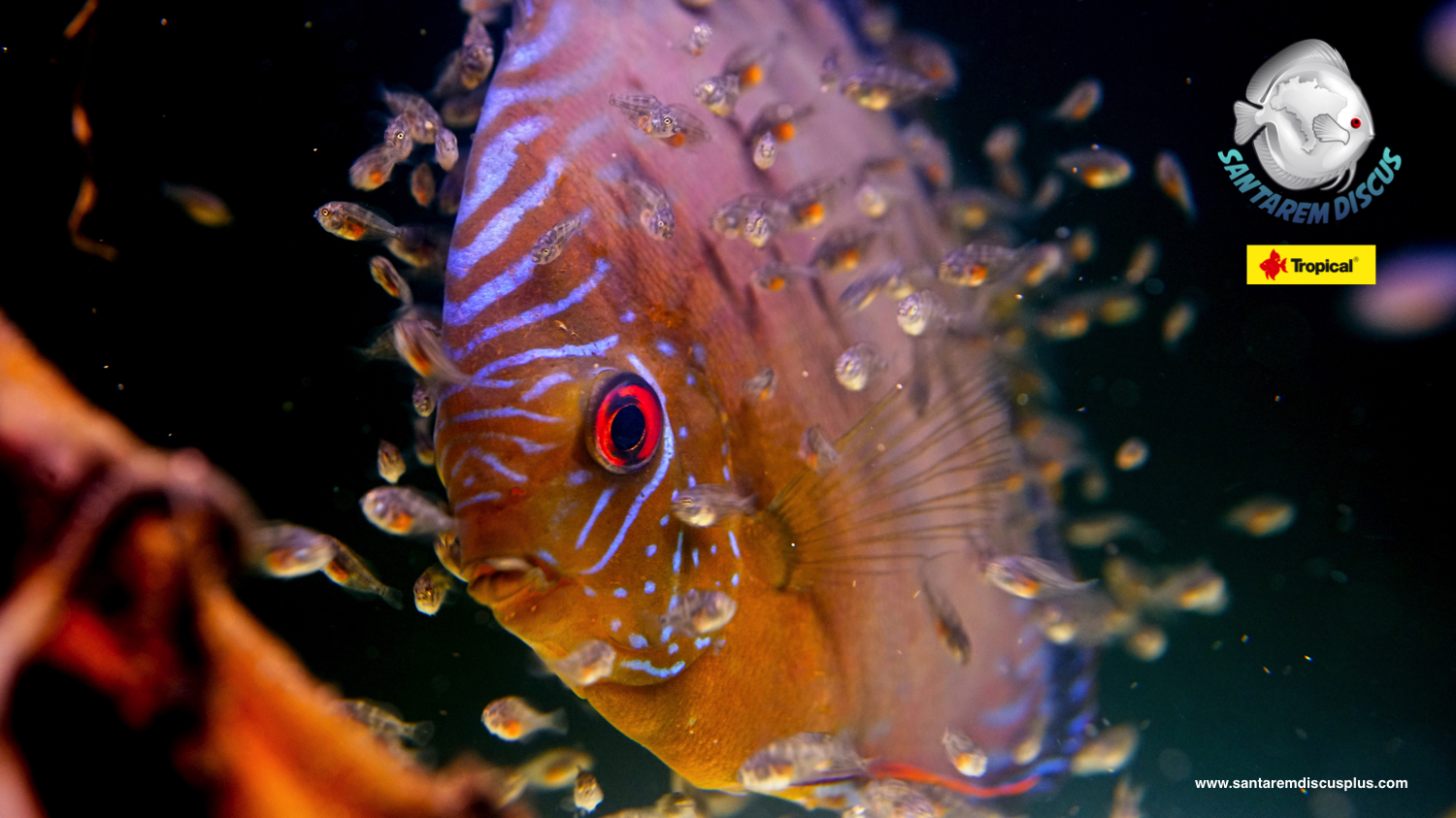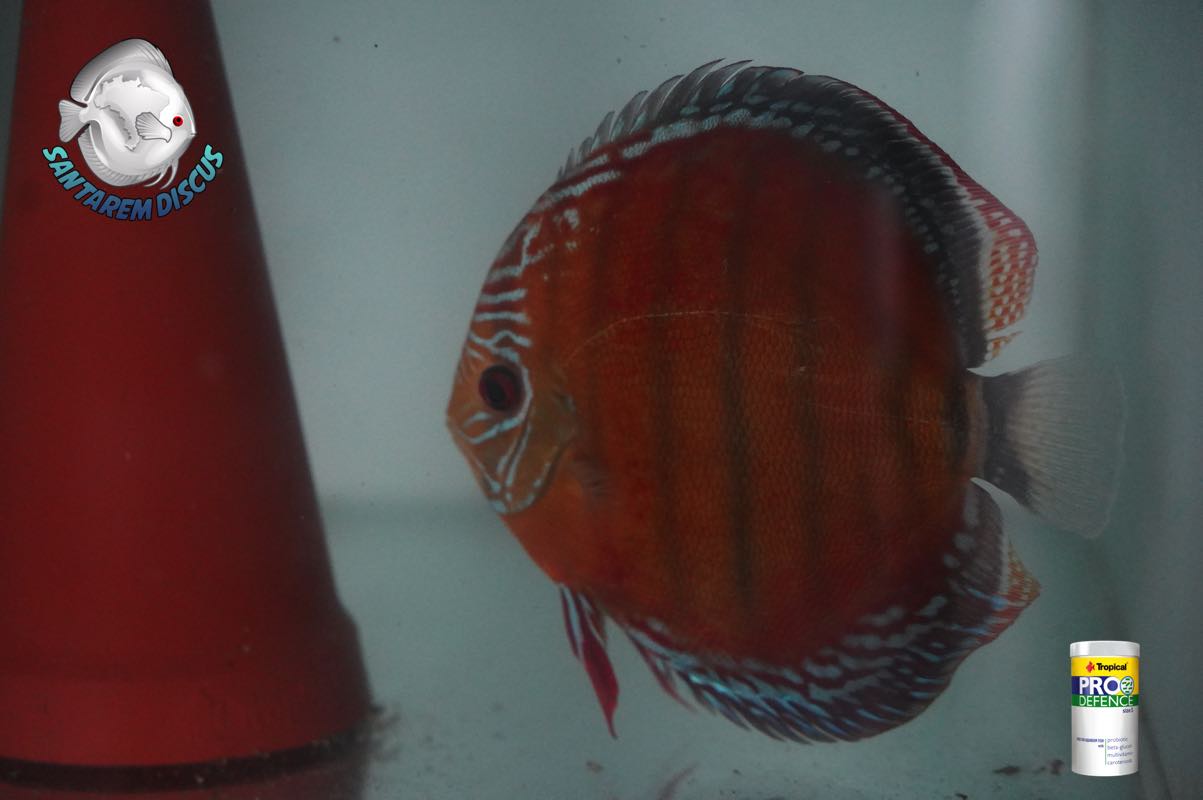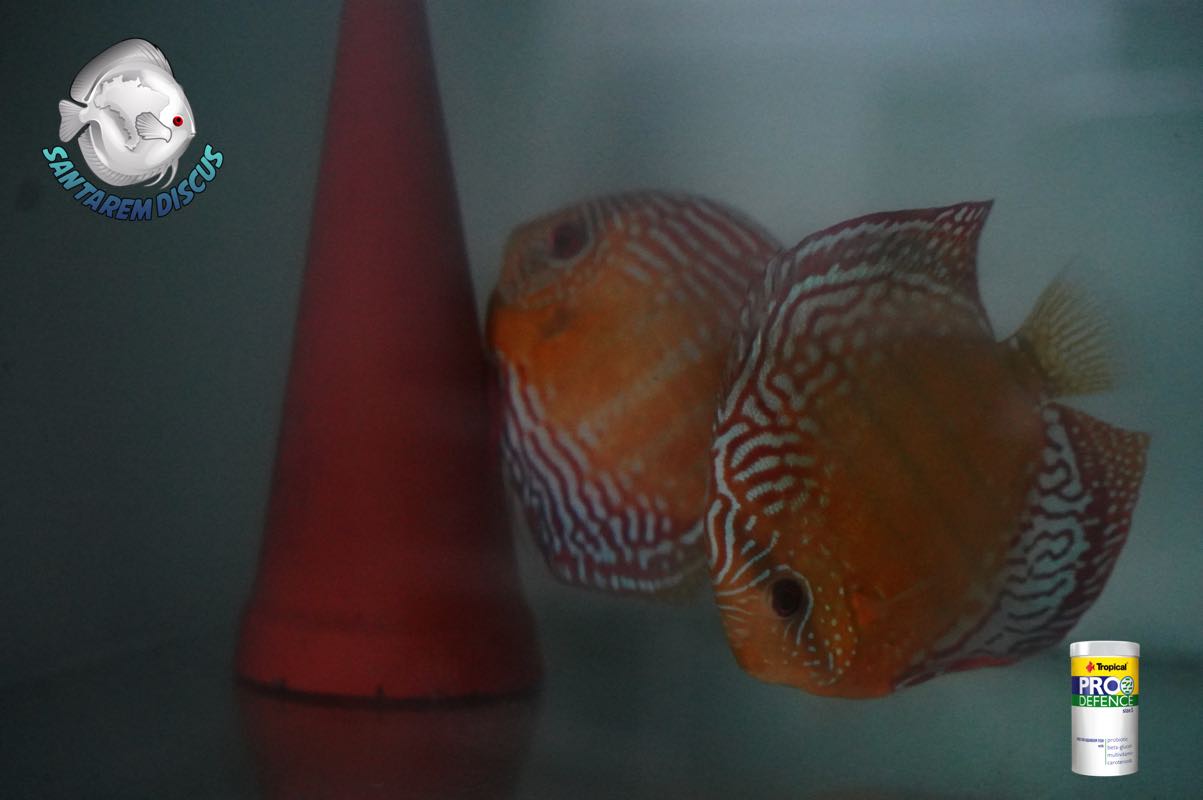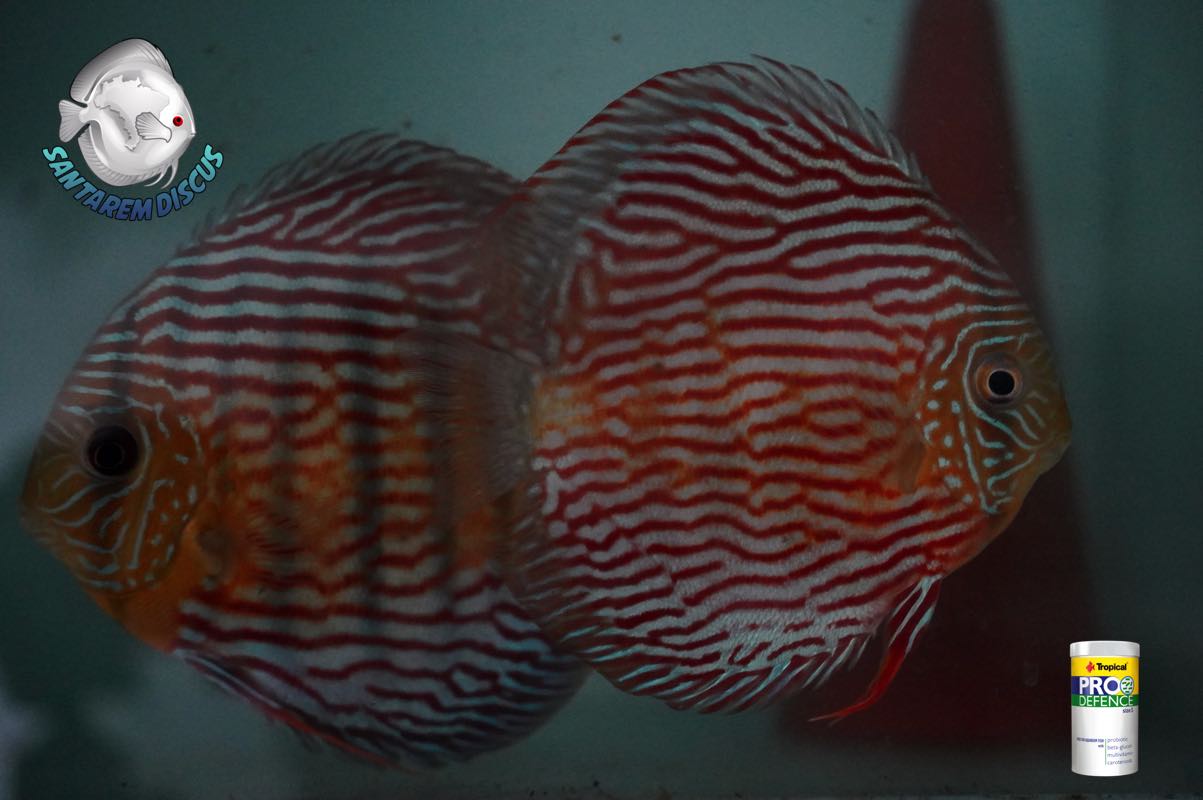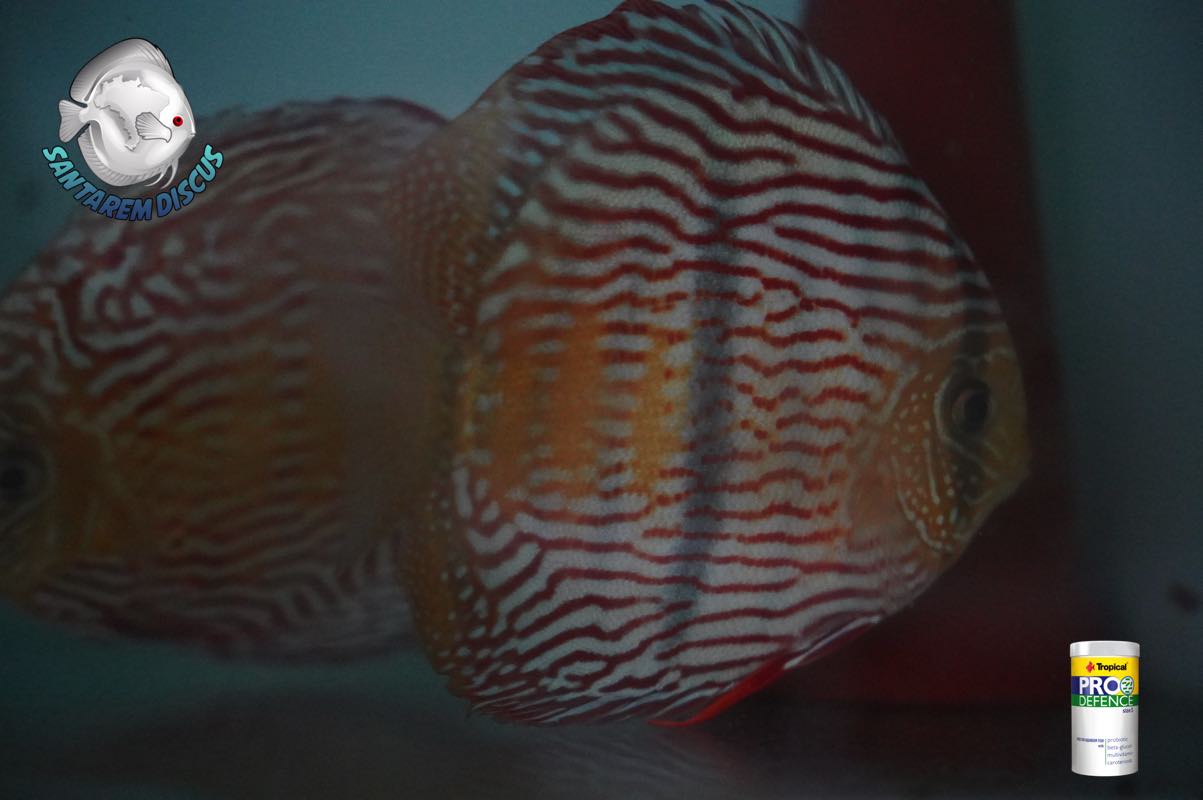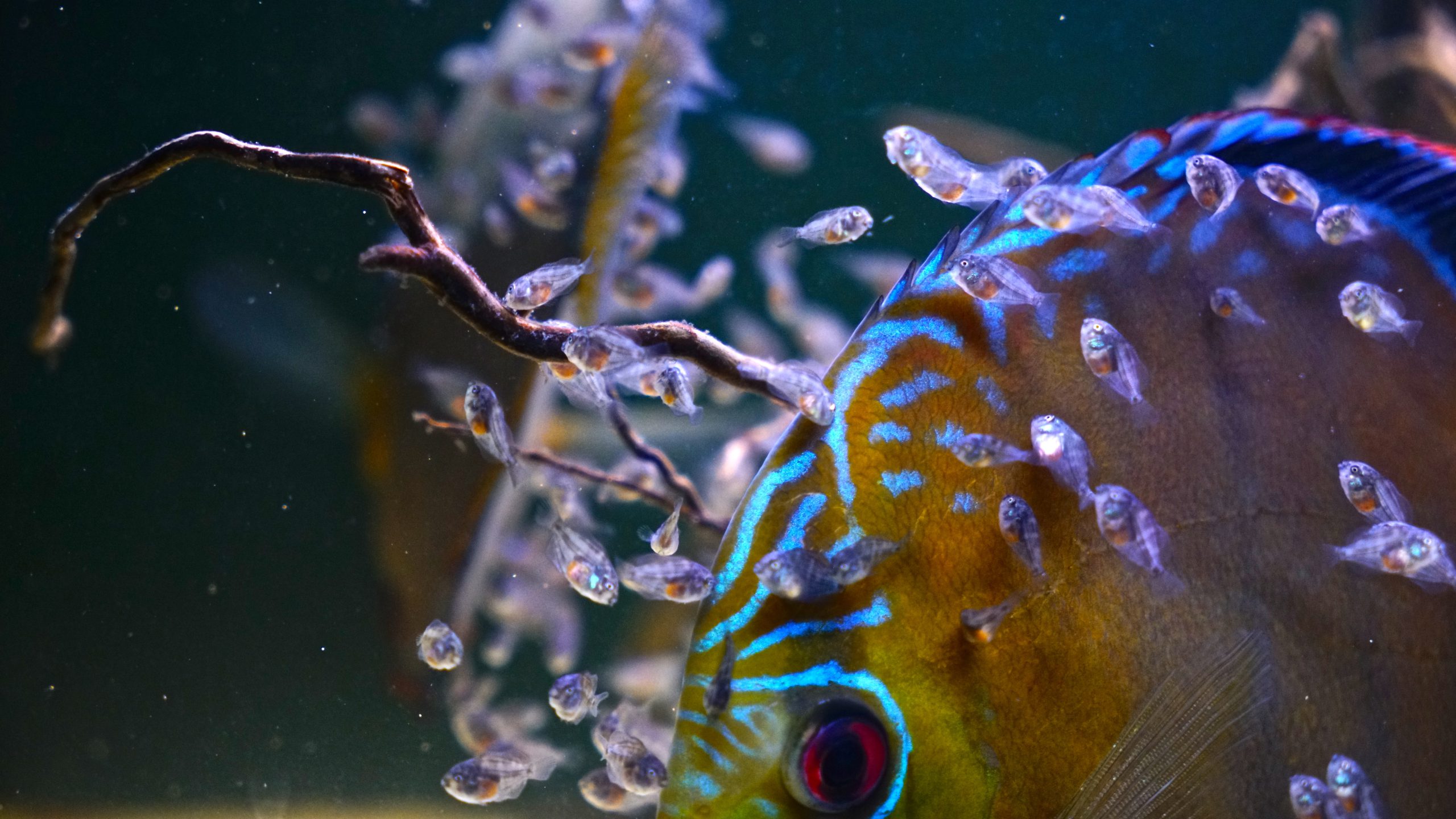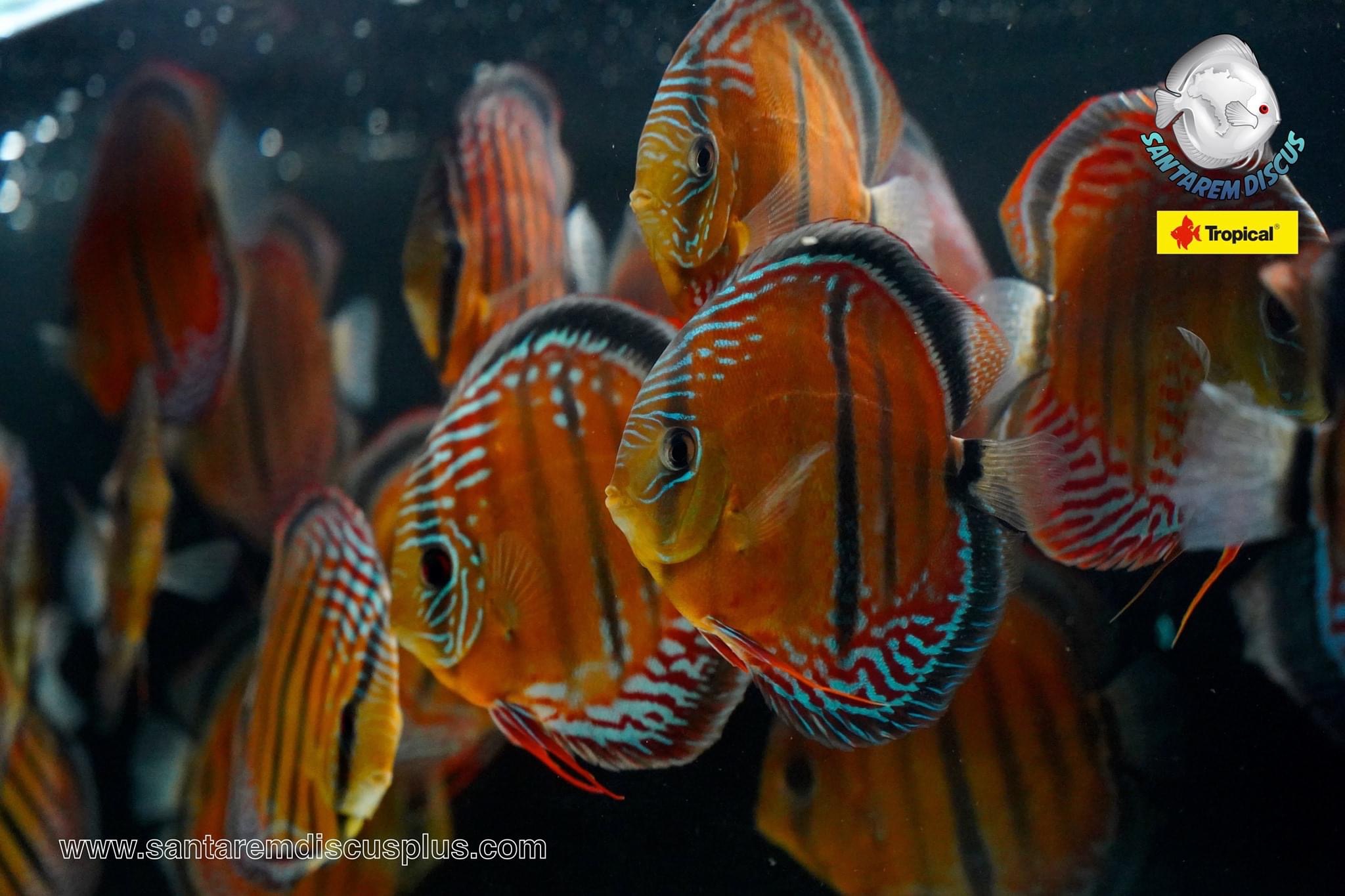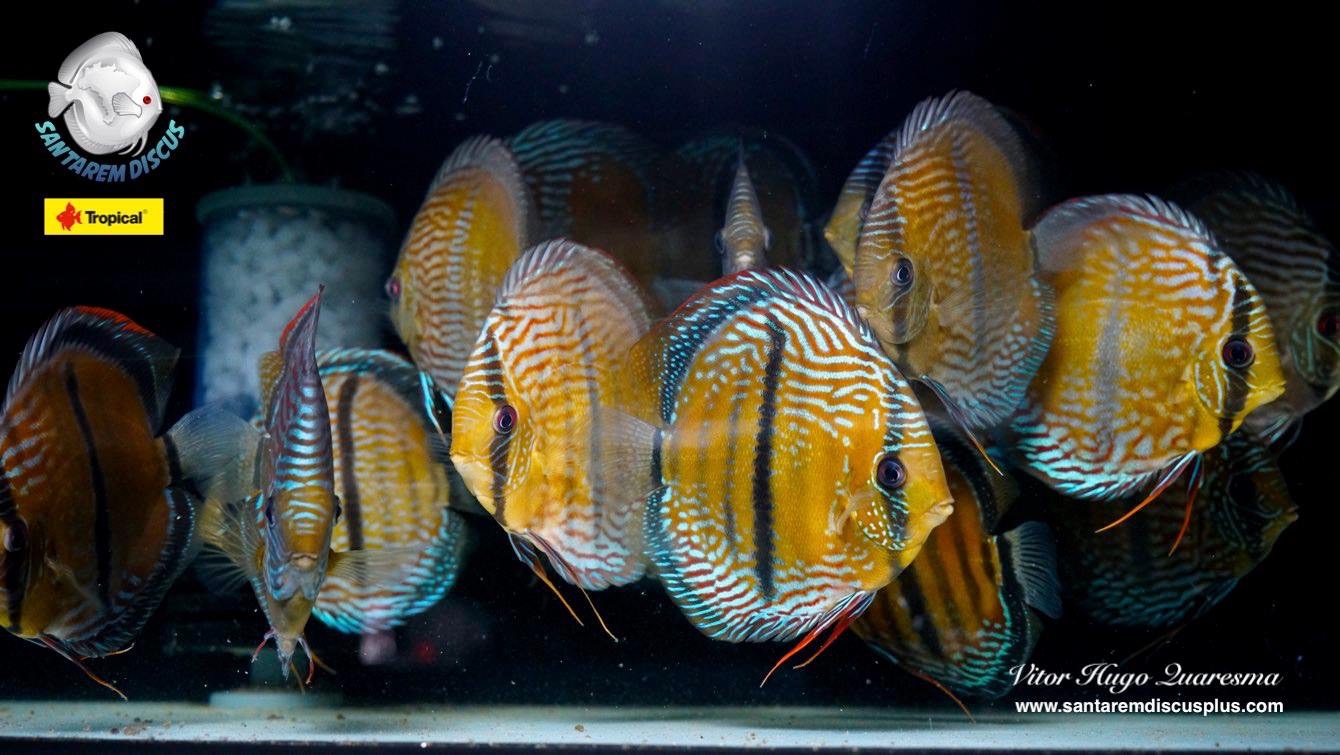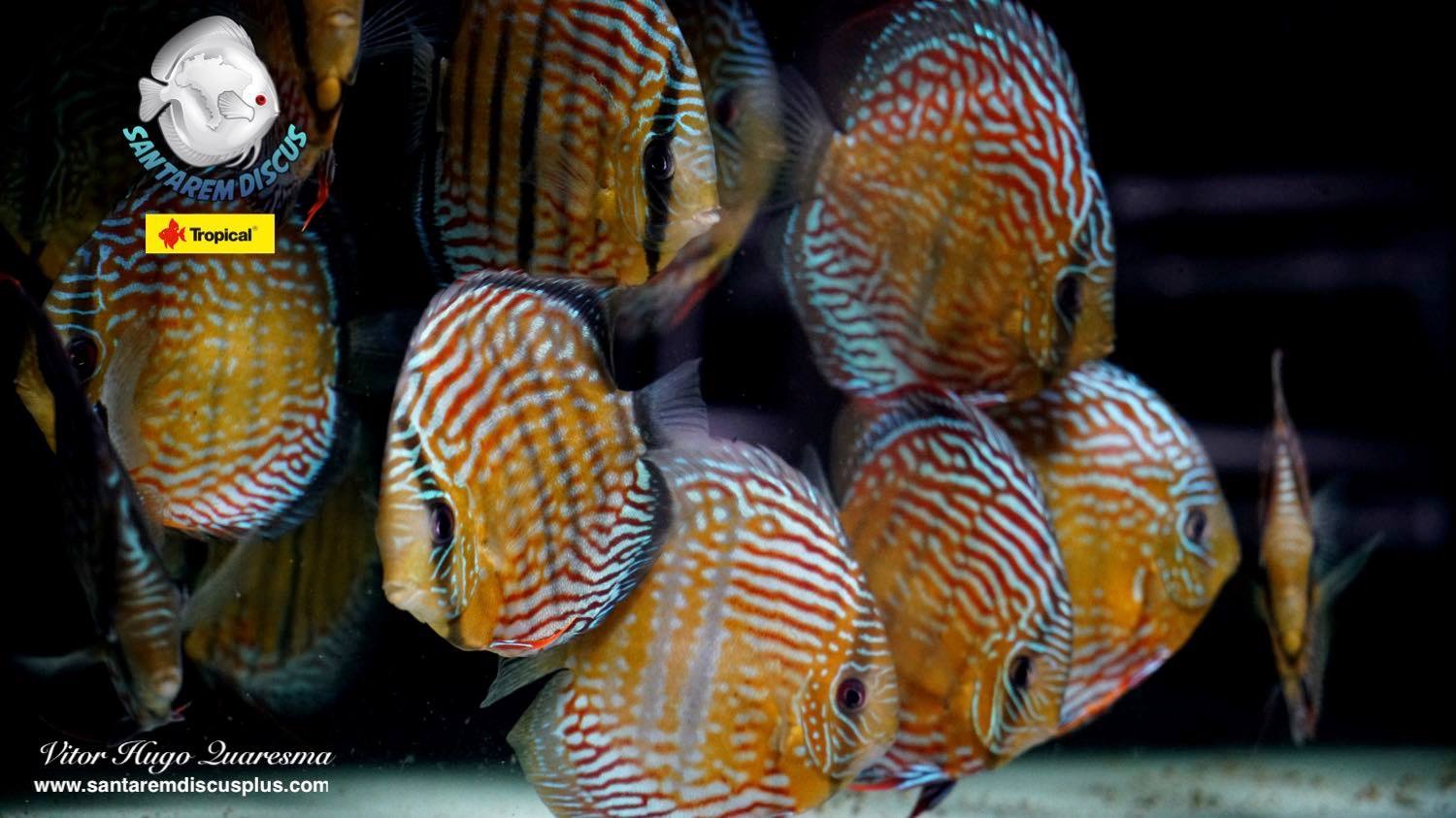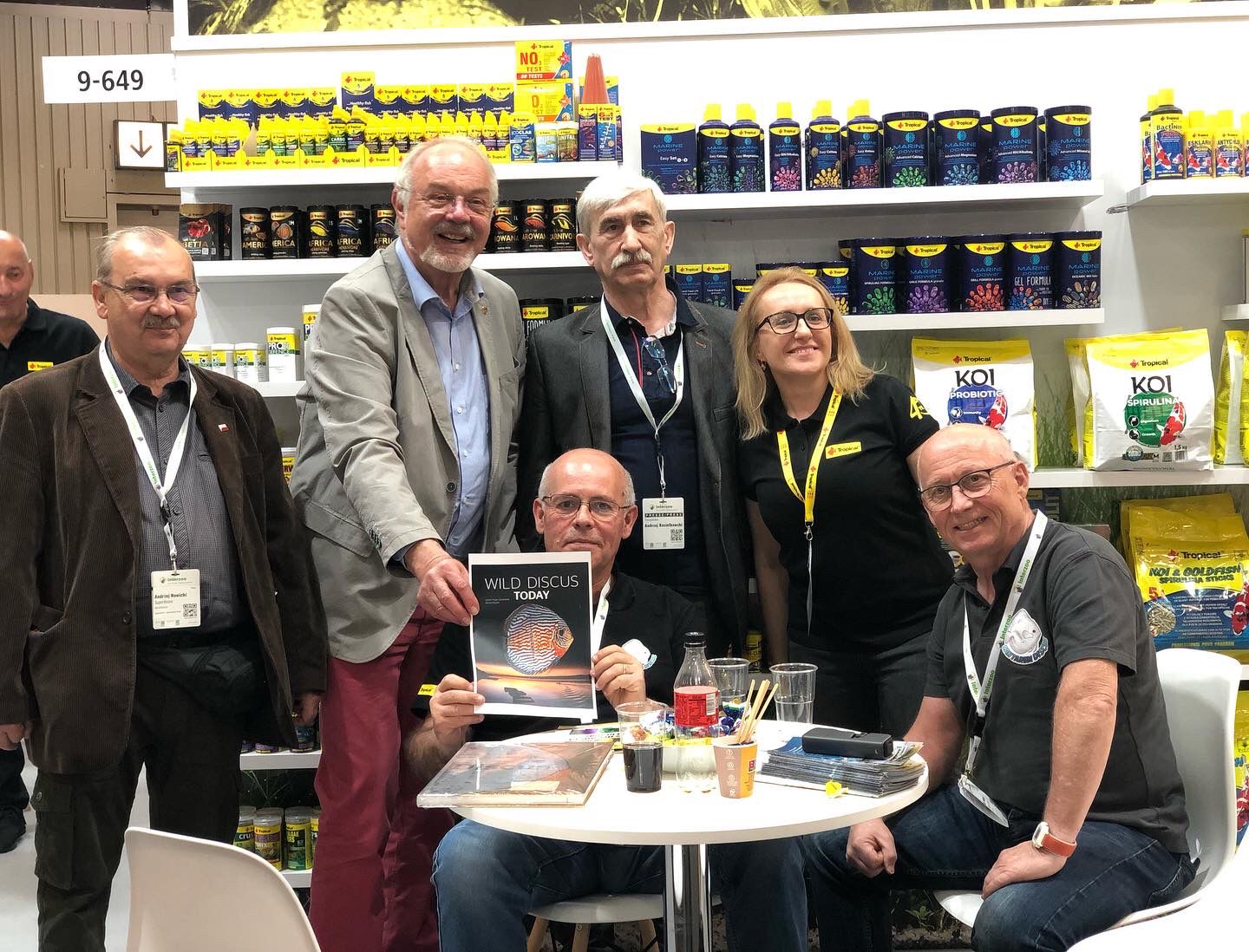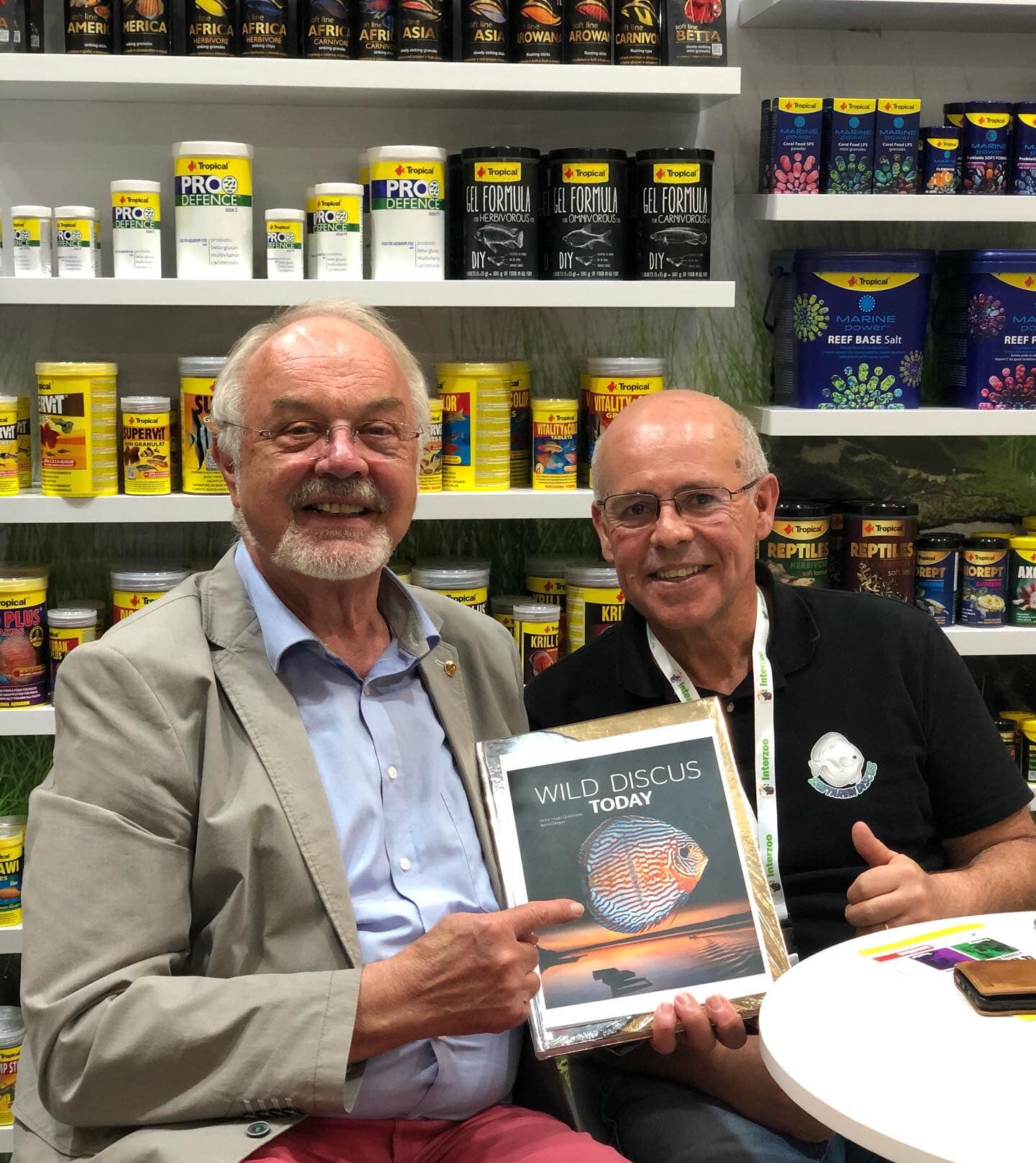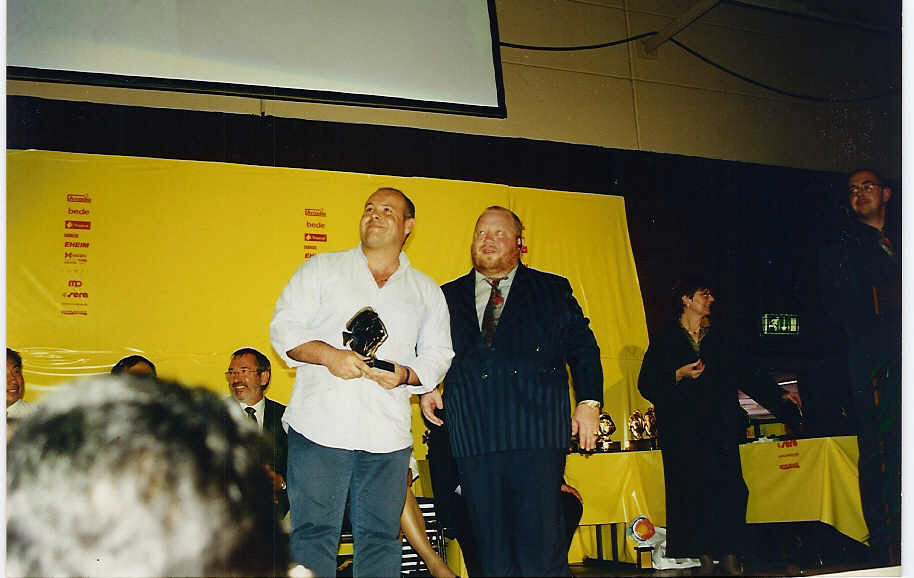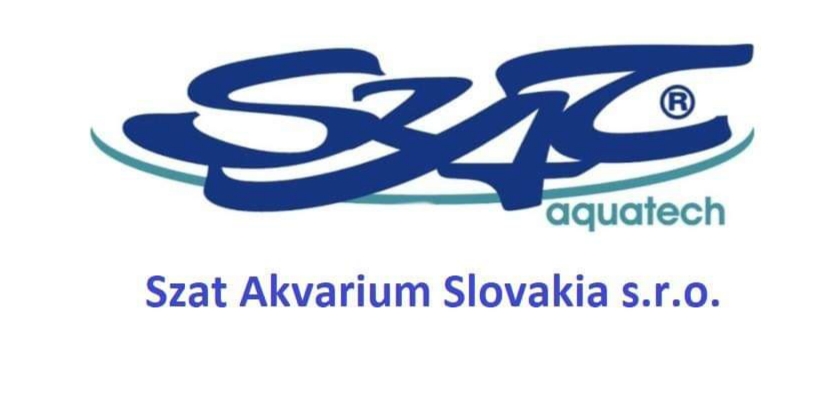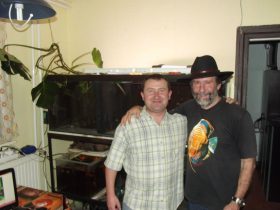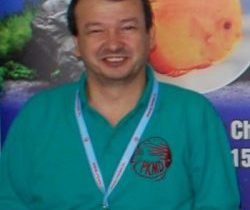Diskusari bring You one of the biggest interview with wild caught fish exporter from Brazil Vitor Hugo Quaresma ,Santarem ltd
How big is your firm and what kind of fish do you keep?
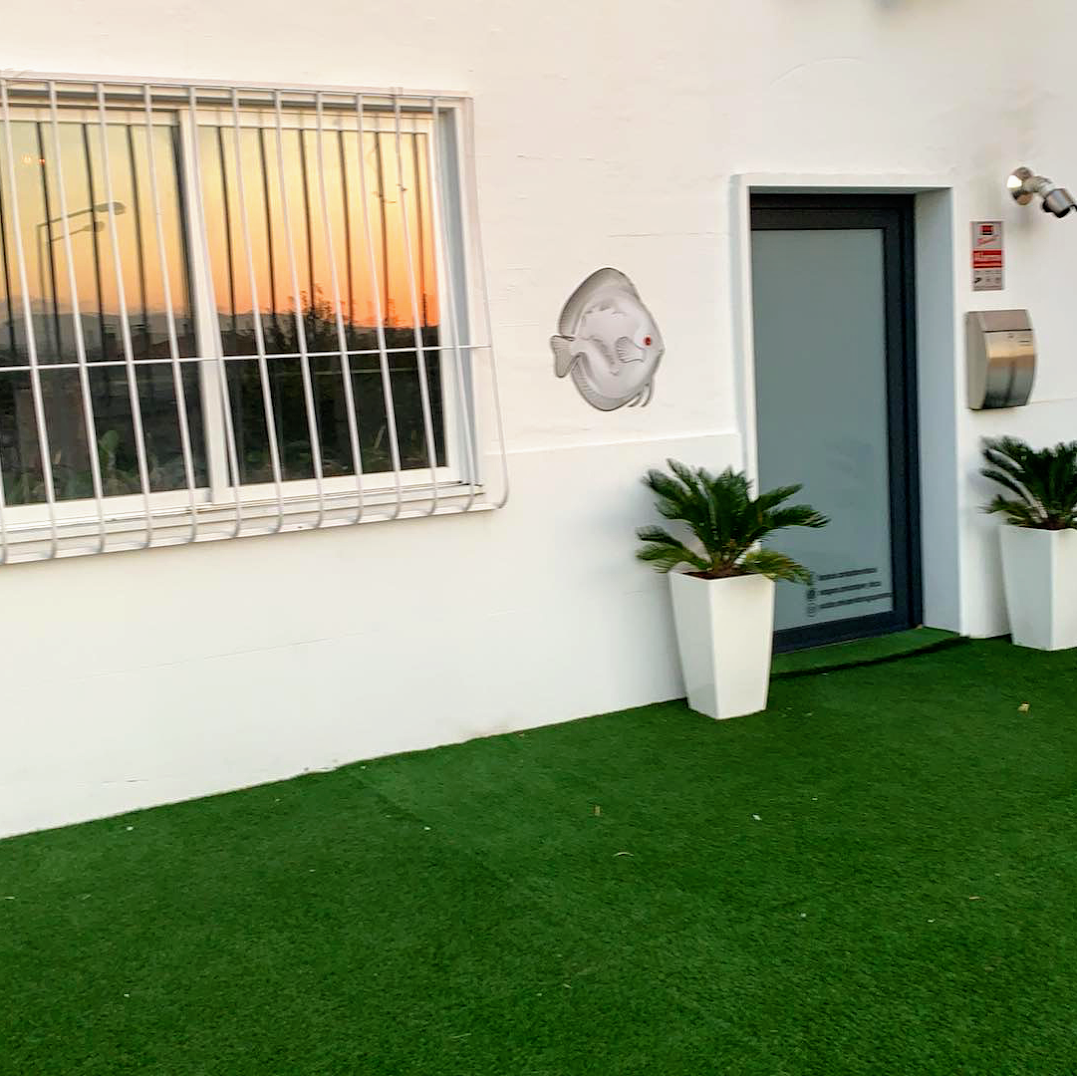 In the Amazon, city of Santarem in Brazil the company is about 300 m2 and we have a total of 46,700 liters of water with sump filters in 6 different systems and also the quarantine room .
In the Amazon, city of Santarem in Brazil the company is about 300 m2 and we have a total of 46,700 liters of water with sump filters in 6 different systems and also the quarantine room .
In Portugal the total area is 450 m2 divided in 2 rooms one with a total of 45.000 l of water and the other that is the breeding room with about 120 m2
We would like to know what is your fishing area?
There are several fishing areas that we fish from Lago Grande in communities like Inanu, Pirquara, etc to Alenquer, where we collect fish in Barra Mansa, Curua, Cuipeua and one more that we do not reveal the name. As well as on the Trombetas River in communities like Iripixi, Batata, Sacuri, etc. Then up the Trombetas River where we have discovered unbelievably beautiful fish in new communities where Wilds had never been caught before. In the Nhamunda region where we have collected fish in a place called Guariba, just like Maracanã and then the Heckel in the upper Nhamunda. Then we have the Monte Alegre region where we select fish in Jaraqui , Jaquara , etc etc . Like in the Obidos region where every other year we select some Wild Discus . These are the main ones then we have other regions that we collect some Wild Discus but usually only go every 3 years .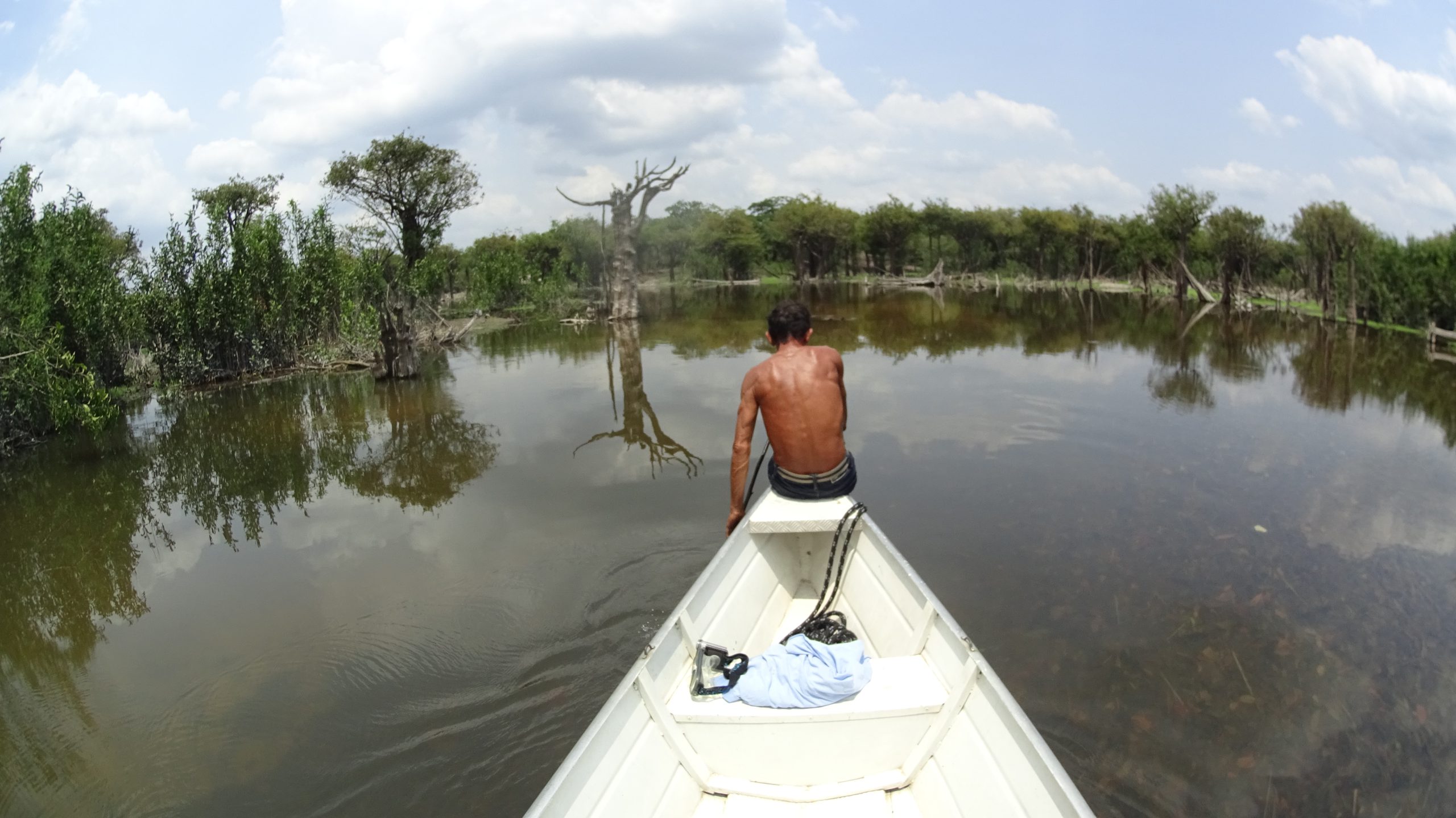
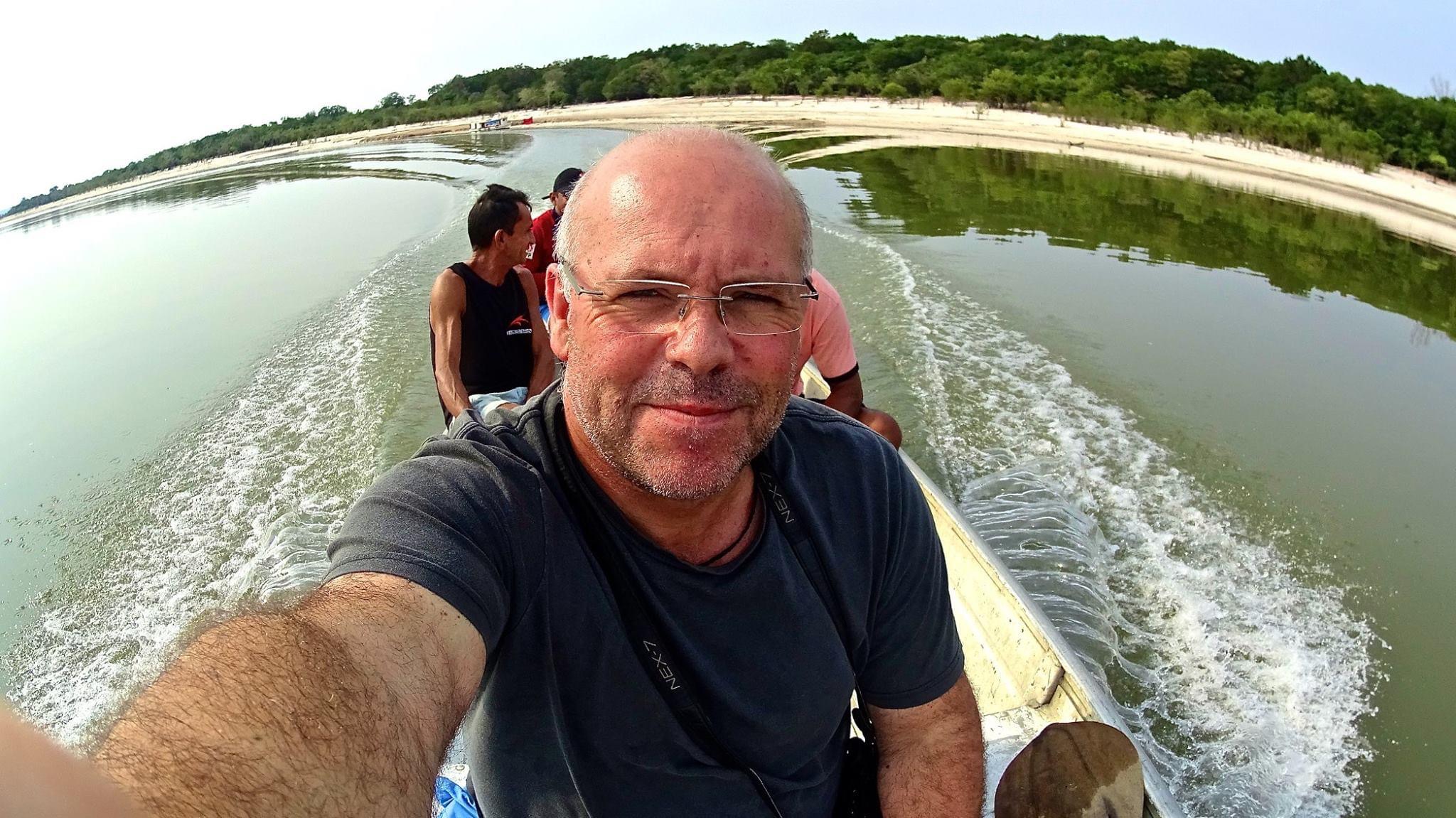 Are you a unique fisherman on Amazon who organizes an expedition and catches a wild discus for buyers,can you explain us a little more closely that expedition,how many days,what area does it include…(can the buyer choose,or do you have some plan before the season what days you are fishing in some area)?
Are you a unique fisherman on Amazon who organizes an expedition and catches a wild discus for buyers,can you explain us a little more closely that expedition,how many days,what area does it include…(can the buyer choose,or do you have some plan before the season what days you are fishing in some area)?
I think I`m the only one to do it. But really this year was to have been the last to make expeditions because I intend to sell the boat that is a high cost to maintain. There are two people interested in buying it, but only for tourism trips, not for research, collection and selection of discus. I think that only we do that.
But even if the boat is sold we are going to do something this year that has never been accomplished in the Wild Discus World . During the month of October we will make 3 expeditions of 8 days for only 6 people. In this expedition will go a biologist extremely well known in Spain and in Central and South America, Hector Gutierrez, known as Dr Pez. During the eight days we will stop in a community and remove 3 to 4 fish from their environment and research, using a microscope and other research tools, what kind of parasites these fish from a particular community carry and what kind of bacteria. The bacteria will be cultured for 4 days to find out what they are and what the best medicine is. This work will also be filmed and will be part of the book that Hector is writing about fish diseases and essentially the life cycle of each parasite.
I organize the expeditions myself plus a staff that usually accompanies us. Captain and helper, Cook and helper and always a fisherman. The expeditions always take place between October and November for 8 days and we pass through 7 communities. In these communities where we have our fishermen . In advance they are advised of the dates we will arrive and already have some Wild Discus collected for me to select and those who accompany see this selection . In the same attempt to explain the selection criteria , the defects , etc . Important to say that during the 2 months and half to 3 months that I am in the Amazon, more than 500,000 fish pass through my hands to select no more than 2500/3000 Wild discus . Returning to the expeditions in some of them the fishermen of each community are instructed and are paid to accompany the tourists and Wild Discus enthusiasts to dive beside them and observe how the Wild Discus are caught. In each community we pay a fee so that those who accompany us can enter the communities and see the houses and places where these fishermen live, introducing a little of the culture of each community.
What do you look for in fish when you select them?
My critter in the main order is the shape , right stress bars , the future color of the fish , small eyes , the proportionality of the fish , size , not having any defects, bites from piranhas or other predators on parts of the fish that will never recover etc etc.A work that has been evolving from year to year because we want more and more to have the best Wild Discus in the market. It takes a “clinical eye” and a lot of experience to know what kind of color the fish will have in the future and what its potential is. An experience that I have gained during these 16 years in the Amazon.
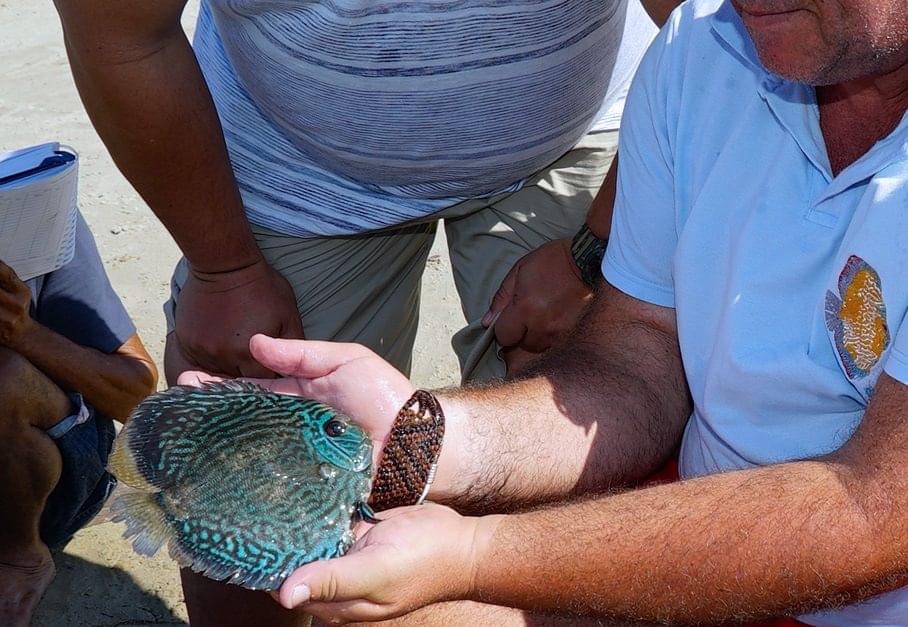 When you collect fish from the wild what is a quarantine procedure,how long do you keep them in quarantine,what medicines do you use etc…?
When you collect fish from the wild what is a quarantine procedure,how long do you keep them in quarantine,what medicines do you use etc…?
Quarantine takes about 3 months in the Amazon and medications such as Octocil, Levamicil and Bilocil all from Manaus Aquarium are used . They are used over 3 months and sometimes even longer to kill the life cycle of the different parasites . The most important part of the quarantine is this killing over several treatments that we repeat , to kill the parasite life cycle . Many people think that with a single treatment the parasite is eliminated but it is not so. Each parasite in each species of fish has a life cycle and in Discus we take this into account. Even so we know that with the quarantines that we do, there are no fish without parasites or bacteria. Whoever says that is fooling himself. What happens is that most fish are practically free of parasites and do not suffer stress states that can develop them.
-You have a great variant of wild discus, what is your favorite?
These season I found in a new community where most have a strong bar in the middle . I call them ICA but many call them Heckel cross . These are fish that live in communities far away from the heckel , I even believe they may have a new DNA something we have been working on with some biologists.
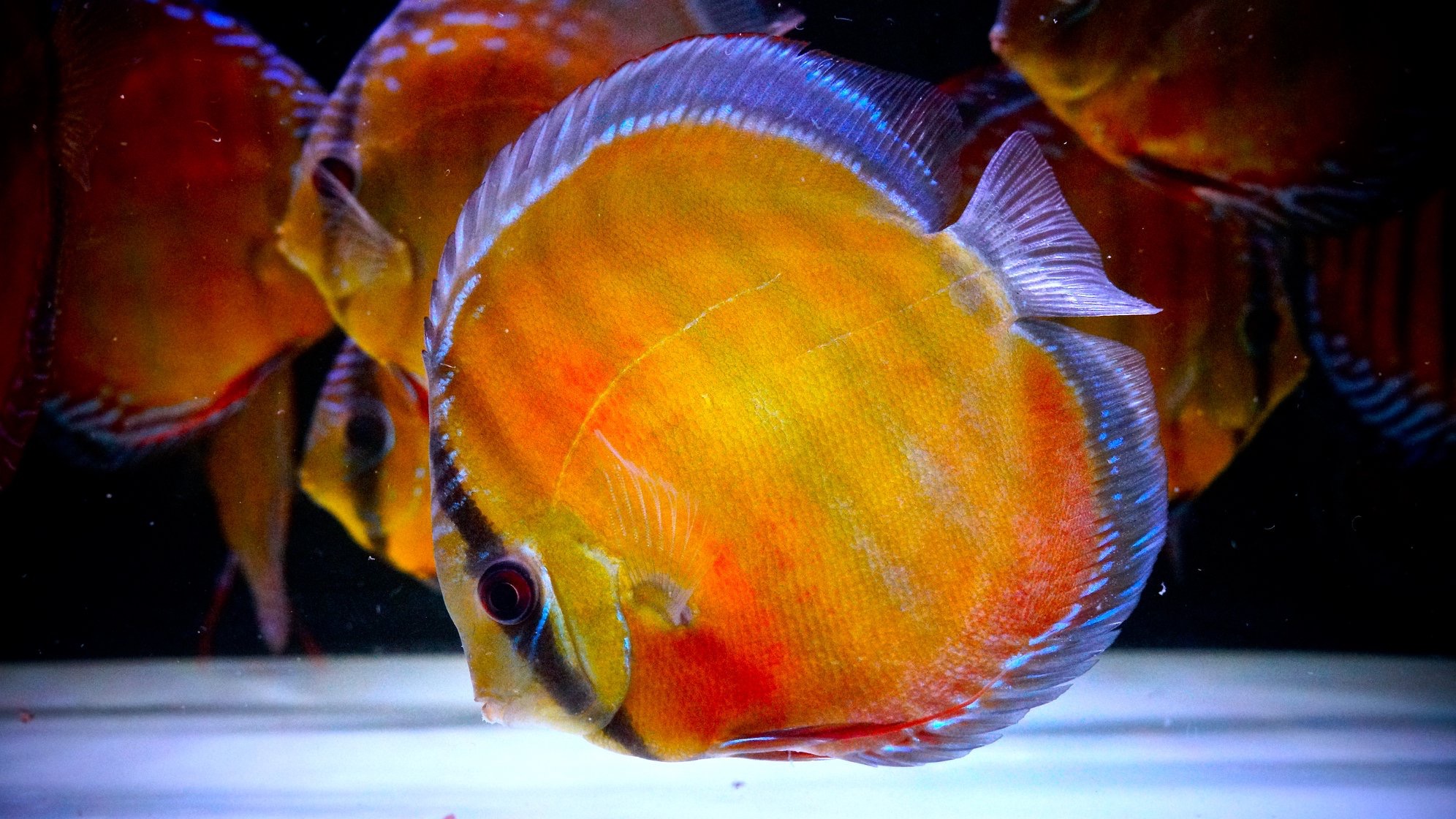
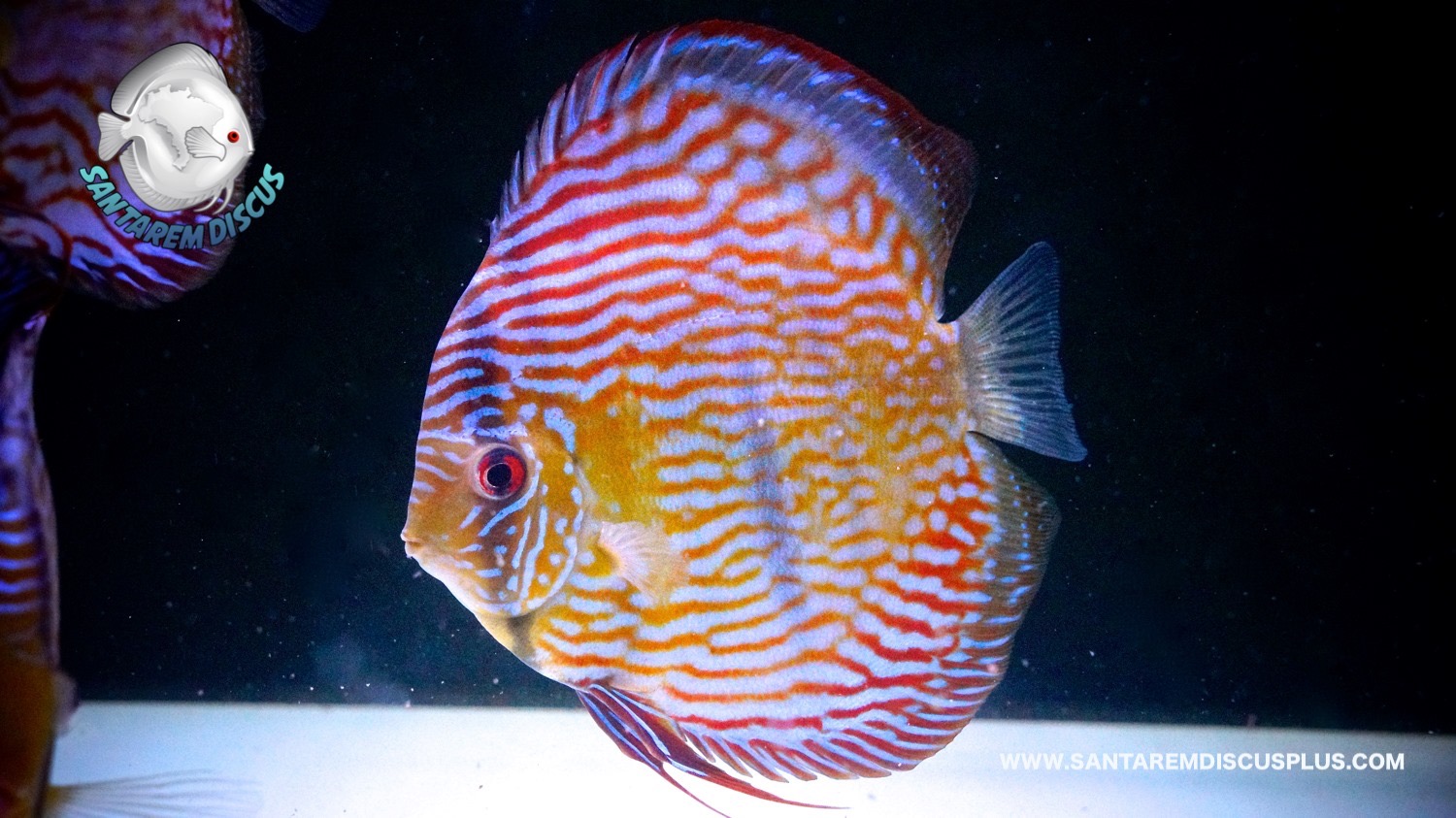 The biggest problem with wild caught fish is food,they eat different things in nature,and in the aquarium we can’t offer them the same food,how can we better adorn them with granulated food,flakes,pellets?
The biggest problem with wild caught fish is food,they eat different things in nature,and in the aquarium we can’t offer them the same food,how can we better adorn them with granulated food,flakes,pellets?
Still in the wooden boxes where they are gathered after being collected by the fishermen for me later , about a week later select them one by one , already before when they were caught they are eating flakes and pellets. In other words, as soon as the fishermen start fishing and putting them in the wooden boxes they start providing food that we leave them with flakes and pellets from Tropical. When they arrive in our company in the Amazon they already recognize the new artificial food but with high quality as is the food from Tropical. When they arrive in Portugal we quarantine them again and only start selling them 3 to 4 months after they have arrived in Portugal through www.santaremdiscusplus.com. The faster the wild discus get used to eating dry food like we do, the less the fish will lose weight, and the more chance we have that the fish will grow and the same won’t happen to their eyes. Fish that you often see with very large eyes may not be old, they may be young but have had poor nutrition after being collected. This is the work we have been doing professionally for more than 10 years and we are evolving year by year. One of the foods that we have seen the most results is the Pro defence based on probiotics where the fish grow quickly and maintain an extraordinary immunity.
When the fish finish a quarantine period, when the new foods and aquariums are adorned, what is the next procedure to sell them?
The best procedure is to sell fish that are already in our waters for at least 4 to 6 months , strong and fat , with the best possible immune system due to the quality of water and food we offer . Water and food are the keys to success as well as the quarantines we perform.The procedure in the past in the Amazon was to sell the fish photographed one by one to our importers. Today we only do this work in Portugal in the online store santaremdiscusplus.com . In Amazonia we have neither the people nor the professional cameras to do the job of organizing the fish by tank and then selling them one by one. We sell for a list price starting at 45 usd per fish. The work of making photos and video for the client to buy our fish is done in a very professional way, because organization is fundamental. More than that no one sells fish to fish which I consider the most honest way to sell fish. What the customer chooses is what he will receive in his home. In case you receive a wrong fish you don’t pay for it but keep a credit. Furthermore, when the fish arrives via UPS on an express service in less than 24 hours, the customer has 2 hours to adapt it to their tank and send information on how the fish arrived. From this point on, our responsibility ends, although we will continue to give the customer full assistance if needed.
We like to know how you prepare the fish for transport,it is a long time to fly to China,Europe,America,they travel over 24,in some cases maybe over 48-72 hours.
Usually the longest trips from the Amazon to China take up to 85+ he stay without eating for about 4 days in extremely well filtered water , in a main system that we have for this purpose . Water that goes on the trip to China is extremely well oxygenated beforehand and heated .Packed in bigger bags than usual . But the procedure is almost the same for others of the 48 countries where we export since 2007. In Portugal , when we sell to private individuals and because the trips don’t take more than 24 h the fish stay without eating for a maximum of 2 days .
In the European web store we see slightly higher prices for your fish than other exporters,can you explain why?
First, someone has to pay for my work and the costs of going to select the fish one by one from different places. The price of the fish at origin is the least important factor, although in recent years it has gradually increased. The biggest cost is the boat trips to the communities. In a boat that uses 25 liters of fuel per hour these trips are never cheap, although we can bring 800 fish each way from various communities we pass through. For example, between the Rio Trombetas and the Rio Nhamunda passing through Terra Santa, it takes about 19 hours by boat, so imagine the cost of transport, when fuel is at the same price as in the European Community. Then we have to add food, the costs of the workers in Brazil, the costs of the company in Brazil such as water, electricity, accountant, veterinarian, etc.. To finish and make you understand, the highest cost is the time that the fish remain in our company before we sell them. I speak both in the company in the Amazon and in the company in Portugal . Unlike our competitors and because we work in a unique and totally different way from them , we keep the fish for several months in Brazil for 3 to 4 months and then do the same again in Portugal . We also have to account for the cost of transport and fish when imported into Portugal and remember that when they enter Portuguese territory we also pay an immediate tax of 23% . With the ever increasing price of transport it is difficult to have cheap prices . It is important to say that we only sell them as I said before in excellent conditions, our Wilds , an extraordinary immunity and already with much of the coloration that still evolves over a few more months at the home of the customer. In addition, in Portugal every fish we sell in our online store comes with a 23% tax that we have to pay to the Portuguese government, plus 28% at the end of the year on profits. Even so there are relatively cheap fish for so many costs and expensive fish that are rarer and harder to find on the world market. Many of the expensive fish we price very high even to keep them from being sold and to be part of the selection of high quality and rare Wild’s that will be future breeders. Even then we sell them for sometimes astronomical prices. The reason is simple, equal and so rare with fantastic health that does not create any type of problem to who buys them , there are few companies in the market to do it . Usually in this trade and among 100% of exporters in Brazil the fish arrive and stay a few days in their companies and are sold without any quarantine . Our fish are not only well quarantined but they also eat Tropical pellets and flakes and when they get to the customer’s house they start eating again, sometimes on the same day. We are talking about Wild Discus …. More than that we created a structure in Portugal in front of a high monetary investment, to be able to have a fairly large amount of Wild Discus as no one has in Europe in stock and that has high costs, but it is also true that the customer who buys us Wild Discus once always comes back again and becomes loyal to the quality we have to offer, making the name of my company grow day by day. The goal in 2023 is to have two types of fish, cheap ones between 120 and 250 euros with all taxes and then high quality fish starting at 300 euros. We will lower prices to have Wilds for everyone . Now it is impossible to sell a super round fish , without defects, with small eyes , fat and with a great immunity for the price of a common and less strong fish as we usually see in the market. You can never buy a Ferrari for the price of a Fiat Punto. But it is important to have fish for all pockets. I think that 2023 will be a surprise for many in relation to price quality. Even though he made the best Wild Discus selection ever in 16 years .
On the Internet we see that you are starting to raise wild fish caught in your company,how do you get that idea,and is it economical?
It seems to me that it is. To get an idea , a company in Israel bought about 500 , F1 the first ones we got before we started the Breeding Wild Discus 2022 project and had the room ready . The same company buys from us if we have 1000 fish monthly . The 500 F1 , with 5- 6 cm were sold for 25€ so I think the idea of breeding Wild Discus from rare and unique pairs could be profitable in the future. We have 39 selected pairs , all quite rare that we kept for 2 years on the site , some of them for high values . Some ended up being sold, others we kept and are ready to breed very soon . It is important to say that there was a high investment in this breeding room as well as the fixed costs of electricity went down about 60% with the acquisition of 34 solar panels. We have a country with a lot of sun and only in months like November and December energy production decreases . Soon we will implement a system of aquaponics where there will be a use of about 85% of the water we remove from the aquariums to be regenerated and lose nitrates and nitrites. This aquaponics will produce Biofouling without fertilizers , because only the water from the fish with nitrates and nitrites will be the source of food for these biofouling .These are two direct costs that lowered the costs of maintaining these Wild Discus without stock and those we want to breed . The investment was extremely high for this project but we expect within 5 years to be paid in full . We have the raw material in our hands, I have already reproduced many thousands of Hybrids, now it is time to reproduce Wilds. More than that I doubt that anyone else in the world has a collection of couples like we have in Portugal. Only someone with a company in Amazonia could do it and more than that not sell them , we keep them extremely healthy to reproduce them after 2 years in our company . After having had stores in Portugal, a first magazine exclusively in Portuguese about Aquaristics, an import site, having embarked on an adventure to the Amazon at the age of 41 to learn more about Wild Discus, having set up an export company and reaching 48 countries in the world. Selling the Wilds I found to famous breeders spread all over Thailand, Malaysia and Germany and winning in the last years almost all the Discus competitions in Europe and the United States in the Wild class, I don’t have much else to do in this Discus World. Opening a Online store in Europe to sell to private individuals, finishing a book that I was invited by Bernd Degen, this last step was missing. Breeding the best Wild Discus from couples of the same community and the most beautiful ones I found. I am actually passionate about Discus and my profession . What I like is the reproduction in this Discus market . To make them born and to make them grow.
What is the size of the tanks where you keep the fish in groups, and what is the size of a breeding tank?
In Portugal they are 150 cm by 60 cm by 50 cm tanks. Breeding tanks are 50x50x50cm
Can you tell us something about the water parameters: temperature,ph,gh,kh,ms in your fish tanks?
Ph 6.4 to 6.8 , with a temperature of 26-27º and a conductivity of 300 mcircoemens ,just TAP water from our area . I’m the breeding tanks we use osmosis .
What fish can you recommend for pet fish in a discus tank?
Few fish but corydoras , Plecos , Altuns , cardinais XL ,can be part of an aquarium with Wild Discus
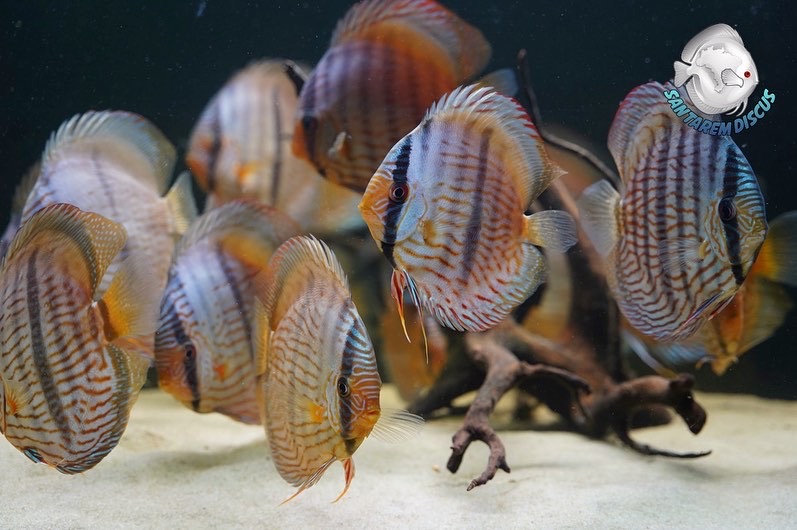 Many people in recent years have shown interest in wild caught discus , what is your recommendation? How do you prepare water , tanks , and decorations for these fishes ?
Many people in recent years have shown interest in wild caught discus , what is your recommendation? How do you prepare water , tanks , and decorations for these fishes ?
Yes, actually the Wild market has grown a lot. They started to look like high quality Wild ‘s that bring no problems to customers and lie to them for years without having to spend money on medicine . So I often say that I might as well buy one fish from Santarem Discus as two or three from somewhere else no matter how cheap they are . Buying healthy fish is the key to success , essentially if they are used to eating dry food , pellets and flakes . My recommendation is first to buy healthy fish , second not to invent using chemicals in the filter water , only in high Ph water peat peat , cappas and zeolite and in case you want to reproduce osmosis mixed with tap water . The water just need to be prepared for 2 months before putting the first fish in and do it in a gradual way , maximum 3 to 4 fish depending on the size of the aquarium . The decoration depends on your taste. Keeping Discus with plants is great but a lot more laborious and expensive because electricity is increasingly expensive and plants need light, unlike wild Discus that do not like light and only an aquarium planted with log refuges I advise you to do it. Personally I like minimalist aquariums with just a log and no sand of any kind and a filtration of at least 5 times the water volume per hour.
A few years ago on an internet site I think it was a European forum, in a tank was, blue, green, brown, and heckel disc, many comments were that they could not be kept in one because of the different water parameters in nature, what do you think about that?
I think it’s a mistake. Wild discus adapt to all kinds of water if it is done in a gradual way. The pH in nature is between 5.5 and 6.0, in an aquarium I have customers with Wild Discus with a pH of 7.5. Different types are brown, red or even Heckel . Again I will repeat that the important thing is the fish go out to the buyer healthy . That is our daily work . Obviously it is different from a hobbyist and is much more complex . A hobbyist has 10 or 20 fish in his house and we usually have 500 to 1500 fish in stock, depending on the time of year. Plus the reproducing couples, I speak of the company in Portugal. In Brazil we have a collection quota of 4000 fish and we usually have in the last 3 years between 1500 and 3000 fish.
You are participating with Bernd Degen in writing a book,can you tell us something about that project?
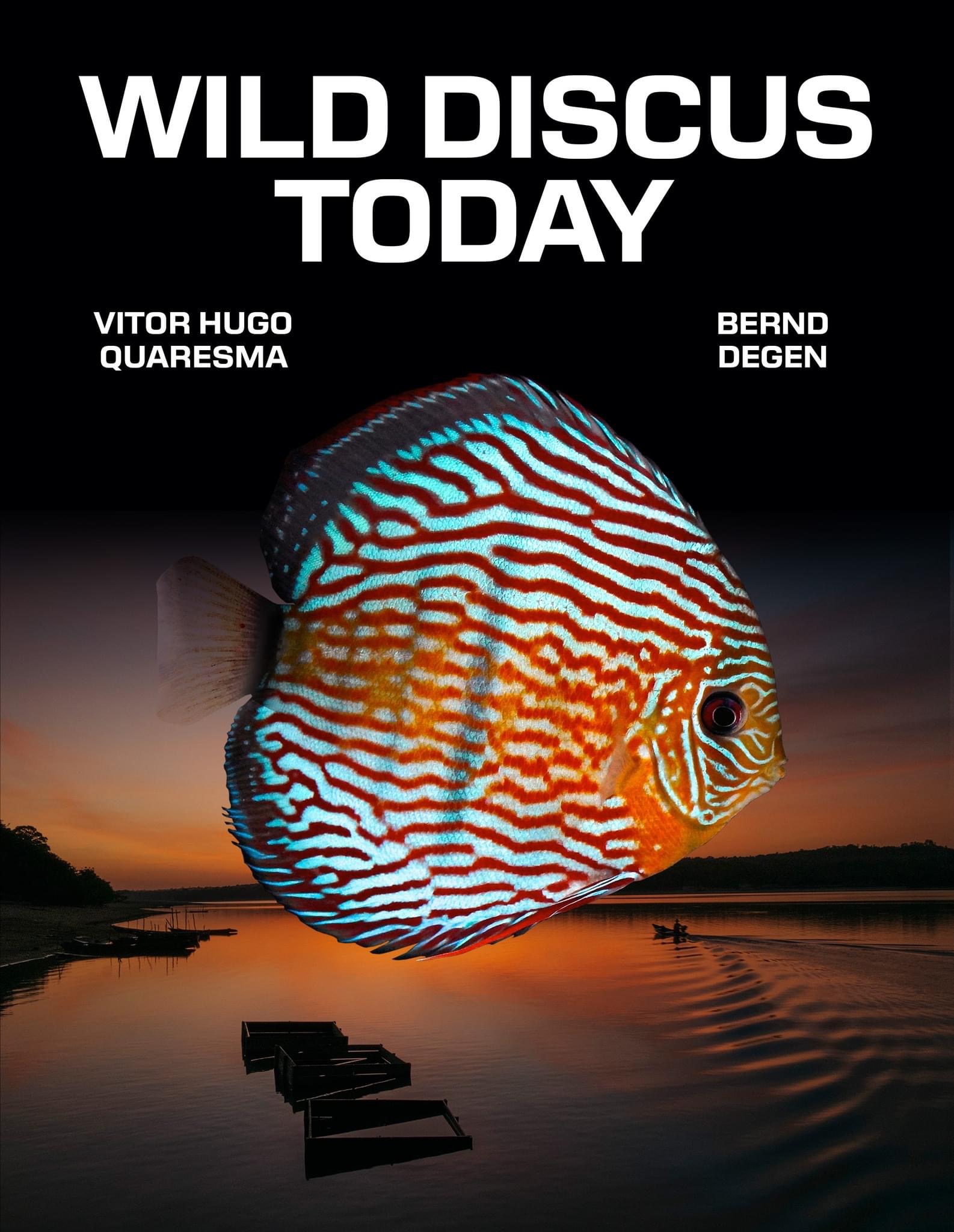 Bernd had been talking to me for some time about doing a book on Wild Discus . At first the idea was to make a book with only pictures of Wilds from various communities . In the background it would be a movie with only pictures. But after several conversations Bernd Degen thought that the world of Wild Discus has evolved a lot in the last years and since Santarem Discus started to put on the market high quality fish and available to the public as in the online store . The book will talk about collecting, the necessary logistics, how to keep Wild Discus in a simple way, feeding, etc. etc. It will be a book where my experience is transmitted through texts made by me and through photos of a reputed photographer in Portugal that accompanied one of my expeditions, Joao Palmeiro. As well as photos of myself because I actually have more than 50.000 photos of Wild Discus that I did in the last 15 years. It will be an actual book about Wild Discus .
Bernd had been talking to me for some time about doing a book on Wild Discus . At first the idea was to make a book with only pictures of Wilds from various communities . In the background it would be a movie with only pictures. But after several conversations Bernd Degen thought that the world of Wild Discus has evolved a lot in the last years and since Santarem Discus started to put on the market high quality fish and available to the public as in the online store . The book will talk about collecting, the necessary logistics, how to keep Wild Discus in a simple way, feeding, etc. etc. It will be a book where my experience is transmitted through texts made by me and through photos of a reputed photographer in Portugal that accompanied one of my expeditions, Joao Palmeiro. As well as photos of myself because I actually have more than 50.000 photos of Wild Discus that I did in the last 15 years. It will be an actual book about Wild Discus .
Your fishes won many First places at competitions around the world,you have many Grand Champion fish ,which one is the most important to you?
The first Discus Championship I entered was in Duisburg, Germany in 2000 where I participated with Hybrid Discus and a Wild Discus. It was a Championship with an unforgettable moment when after being introduced to Jack Wattley , he asked me which Discus I had taken to the Championship. We both went to see the Discus in competition and when he got close to the Wild one he said to me , for me this is the winner . I was surprised and proud and at the same time Jack Wattley, 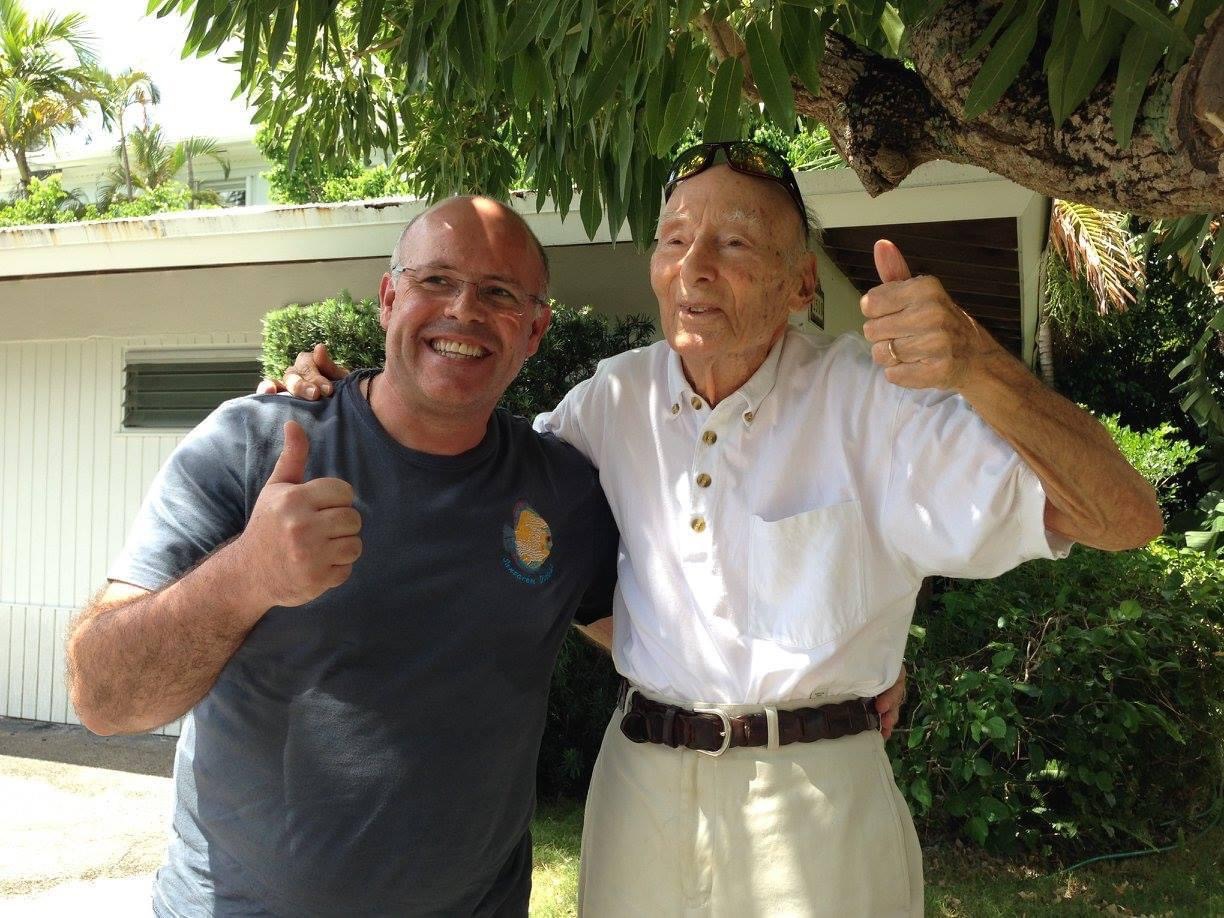
with whom I kept in touch until he passed away, took out of his pocket a piece of paper with the number of the aquarium where my Wild Discus was. And he says to me “to see that I am not joking, look at the number of this paper, it is from your Wild”.
I ended up participating until 2006 in all the editions of this Championship in Duisburg, besides participating in others in France.
When I decided to go to the Amazon to learn a little more about the origin of the Discus, I stopped participating in competitions. I decided that my customers would be the ones to participate with some of the best Wild Discus that I find in Amazonia. Since 2015 we have won almost all the international competitions in Europe and the United States . Sometimes with Wild Discus that were considered the “Best in Show” . The winners are our customers . It would not be fair for us to participate with Wild Discus in Competitions and be competitors of our customers . Just as I never accepted to be a judge of any championship. I was already invited, for example, by a Club in South Korea, for the Discus Championship in this country and to participate some of our Wild Discus obviously had to refuse. Unfortunately and even winning most of the competitions in the last years, most of the Juris have little knowhow to evaluate Wild Discus. Personally, the only jury with the ability to judge Wild Discus is Cüneyt Birol. For me they pass thousands of Wild Discus for the hands and I see in some competitions as it happened in the last edition of Vivarium, Championship of Discus organized by a Belgian Club, the three Wild discus won not for its quality, but because they belonged to a certain person, friend of most of the Juris. Incredible as it may be, the Juris know to whom the Discus belong. In short, it is not the Discus that wins, but the people to whom they belong. Then there is, on the part of some of those who participate, an enormous pressure on the judges and many times they are themselves judging the fish of the other competitors, pointing out defects. Even if they are exempt, it is the juris to evaluate them, not the competitors !!!
For this reason I have decided not to participate in any more International Discus Competition . Jurors have no competence to judge Wild Discus, there is a favoring by friendship between the judges and the participants. To finish, who organizes Championships should have different water conditions for Wild Discus in competition . More acidic water, catappa leaves and if possible the fish should be placed at least 4 days before they are judged. We know how much stress a Wild Discus is under, and it loses more than 30% of its color as soon as it leaves the tank where it has been kept for months. But personally I think I have little to prove and our Wild Discus speak for themselves. More than that it is not the Championships and the victories in them that bring us sales. The Championships are for a small group of people, where of course I include myself, not for Hobbyists in general.
At the end of this interview, besides these questions, do you have anything to add, what do you think is important and the readers want to know?
I have dedicated about 40 years to Discus . Commented by Hybrids and breeding them up to 40 couples , having had 3 stores and an export site before going to the Amazon and that from my own experience Wild Discus are fish 10 times more hardy than Hybrids and easy to keep if they go through a very strict quarantine protocol and are fed from the time they arrive at the exporter until they are exported . Even for 40 years working with Discus every day I learn and that is what motivates me . Such as the search for new Wild Discus that were never found in the Amazon and for which we have invested a lot of money in logistics such as boats, cars, wetsuits for the fishermen, etc etc- On the other hand the objective is to reproduce F1 and to stop capturing fish in the Amazon in 3 years at the most and to finish this immense adventure that I started in 2006 .
Mr. Vitor Hugo Quaresma,thank you for accepting this interview,we wish you much success in your work.
